Voyager, NASA’s Longest-Lived Mission, Logs 45 Years in Space

This archival image taken at NASA’s Jet Propulsion Laboratory on March 23, 1977, shows engineers preparing the Voyager 2 spacecraft ahead of its launch later that year.
Launched in 1977, the twin Voyager probes are NASA’s longest-operating mission and the only spacecraft ever to explore interstellar space.
NASA’s twin Voyager probes have become, in some ways, time capsules of their era: They each carry an eight-track tape player for recording data, they have about 3 million times less memory than modern cellphones, and they transmit data about 38,000 times slower than a 5G internet connection.
Yet the Voyagers remain on the cutting edge of space exploration. Managed and operated by NASA’s Jet Propulsion Laboratory in Southern California, they are the only probes to ever explore interstellar space – the galactic ocean that our Sun and its planets travel through.
The Sun and the planets reside in the heliosphere, a protective bubble created by the Sun’s magnetic field and the outward flow of solar wind (charged particles from the Sun). Researchers – some of them younger than the two distant spacecraft – are combining Voyager’s observations with data from newer missions to get a more complete picture of our Sun and how the heliosphere interacts with interstellar space.
NASA’s Solar System Interactive lets users see where the Voyagers are right now relative to the planets, the Sun, and other spacecraft. View it yourself here . Credit: NASA/JPL-Caltech
“The heliophysics mission fleet provides invaluable insights into our Sun, from understanding the corona or the outermost part of the Sun’s atmosphere, to examining the Sun’s impacts throughout the solar system, including here on Earth, in our atmosphere, and on into interstellar space,” said Nicola Fox, director of the Heliophysics Division at NASA Headquarters in Washington. “Over the last 45 years, the Voyager missions have been integral in providing this knowledge and have helped change our understanding of the Sun and its influence in ways no other spacecraft can.”
The Voyagers are also ambassadors, each carrying a golden record containing images of life on Earth, diagrams of basic scientific principles, and audio that includes sounds from nature, greetings in multiple languages, and music. The gold-coated records serve as a cosmic “message in a bottle” for anyone who might encounter the space probes. At the rate gold decays in space and is eroded by cosmic radiation, the records will last more than a billion years.

45 Years of Voyager I and II
Launched in 1977, NASA’s twin Voyager spacecraft inspired the world with pioneering visits to Jupiter, Saturn, Uranus, and Neptune. Their journey continues 45 years later as both probes explore interstellar space, the region outside the protective heliosphere created by our Sun. Researchers – some younger than the spacecraft – are now using Voyager data to solve mysteries of our solar system and beyond.

This archival photo shows engineers working on vibration acoustics and pyro shock testing of NASA’s Voyager on Nov. 18, 1976. Credit: NASA/JPL-Caltech

NASA’s Voyager 1 acquired this image of a volcanic explosion on Io on March 4, 1979, about 11 hours before the spacecraft’s closest approach to the moon of Jupiter.

Neptune’s green-blue atmosphere was shown in greater detail than ever before in this image from NASA’s Voyager 2 as the spacecraft rapidly approached its encounter with the giant planet in August 1989.

This updated version of the iconic "Pale Blue Dot" image taken by the Voyager 1 spacecraft uses modern image-processing software and techniques to revisit the well-known Voyager view while attempting to respect the original data and intent of those who planned the images.

This illustrated graphic was made to mark Voyager 1’s entry into interstellar space in 2012. It puts solar system distances in perspective, with the scale bar in astronomical units and each set distance beyond 1 AU (the average distance between the Sun and Earth) representing 10 times the previous distance.

This graphic highlights some of the Voyager mission’s key accomplishments. Credit: NASA/JPL-Caltech Full image details

This graphic provides some of the mission’s key statistics from 2018, when NASA’s Voyager 2 probe exited the heliosphere. Credit: NASA/JPL-Caltech Full image details
Beyond Expectations
Voyager 2 launched on Aug. 20, 1977, quickly followed by Voyager 1 on Sept. 5. Both probes traveled to Jupiter and Saturn, with Voyager 1 moving faster and reaching them first. Together, the probes unveiled much about the solar system’s two largest planets and their moons. Voyager 2 also became the first and only spacecraft to fly close to Uranus (in 1986) and Neptune (in 1989), offering humanity remarkable views of – and insights into – these distant worlds.
While Voyager 2 was conducting these flybys, Voyager 1 headed toward the boundary of the heliosphere. Upon exiting it in 2012 , Voyager 1 discovered that the heliosphere blocks 70% of cosmic rays, or energetic particles created by exploding stars. Voyager 2, after completing its planetary explorations, continued to the heliosphere boundary, exiting in 2018 . The twin spacecraft’s combined data from this region has challenged previous theories about the exact shape of the heliosphere.

Voyager 1 and 2 have accomplished a lot since they launched in 1977. This infographic highlights the mission’s major milestones, including visiting the four outer planets and exiting the heliosphere, or the protective bubble of magnetic fields and particles created by the Sun.
“Today, as both Voyagers explore interstellar space, they are providing humanity with observations of uncharted territory,” said Linda Spilker, Voyager’s deputy project scientist at JPL. “This is the first time we’ve been able to directly study how a star, our Sun, interacts with the particles and magnetic fields outside our heliosphere, helping scientists understand the local neighborhood between the stars, upending some of the theories about this region, and providing key information for future missions.”
The Long Journey
Over the years, the Voyager team has grown accustomed to surmounting challenges that come with operating such mature spacecraft, sometimes calling upon retired colleagues for their expertise or digging through documents written decades ago.
Each Voyager is powered by a radioisotope thermoelectric generator containing plutonium, which gives off heat that is converted to electricity. As the plutonium decays, the heat output decreases and the Voyagers lose electricity. To compensate , the team turned off all nonessential systems and some once considered essential, including heaters that protect the still-operating instruments from the frigid temperatures of space. All five of the instruments that have had their heaters turned off since 2019 are still working, despite being well below the lowest temperatures they were ever tested at.
Get the Latest JPL News
Recently, Voyager 1 began experiencing an issue that caused status information about one of its onboard systems to become garbled. Despite this, the system and spacecraft otherwise continue to operate normally, suggesting the problem is with the production of the status data, not the system itself. The probe is still sending back science observations while the engineering team tries to fix the problem or find a way to work around it.
“The Voyagers have continued to make amazing discoveries, inspiring a new generation of scientists and engineers,” said Suzanne Dodd, project manager for Voyager at JPL. “We don’t know how long the mission will continue, but we can be sure that the spacecraft will provide even more scientific surprises as they travel farther away from the Earth.”
More About the Mission
A division of Caltech in Pasadena, JPL built and operates the Voyager spacecraft. The Voyager missions are a part of the NASA Heliophysics System Observatory, sponsored by the Heliophysics Division of the Science Mission Directorate in Washington.
For more information about the Voyager spacecraft, visit:
https://www.nasa.gov/voyager
News Media Contact
Calla Cofield
Jet Propulsion Laboratory, Pasadena, Calif.
626-808-2469
Inside NASA's 5-month fight to save the Voyager 1 mission in interstellar space

After working for five months to re-establish communication with the farthest-flung human-made object in existence, NASA announced this week that the Voyager 1 probe had finally phoned home.
For the engineers and scientists who work on NASA’s longest-operating mission in space, it was a moment of joy and intense relief.
“That Saturday morning, we all came in, we’re sitting around boxes of doughnuts and waiting for the data to come back from Voyager,” said Linda Spilker, the project scientist for the Voyager 1 mission at NASA’s Jet Propulsion Laboratory in Pasadena, California. “We knew exactly what time it was going to happen, and it got really quiet and everybody just sat there and they’re looking at the screen.”
When at long last the spacecraft returned the agency’s call, Spilker said the room erupted in celebration.
“There were cheers, people raising their hands,” she said. “And a sense of relief, too — that OK, after all this hard work and going from barely being able to have a signal coming from Voyager to being in communication again, that was a tremendous relief and a great feeling.”

The problem with Voyager 1 was first detected in November . At the time, NASA said it was still in contact with the spacecraft and could see that it was receiving signals from Earth. But what was being relayed back to mission controllers — including science data and information about the health of the probe and its various systems — was garbled and unreadable.
That kicked off a monthslong push to identify what had gone wrong and try to save the Voyager 1 mission.
Spilker said she and her colleagues stayed hopeful and optimistic, but the team faced enormous challenges. For one, engineers were trying to troubleshoot a spacecraft traveling in interstellar space , more than 15 billion miles away — the ultimate long-distance call.
“With Voyager 1, it takes 22 1/2 hours to get the signal up and 22 1/2 hours to get the signal back, so we’d get the commands ready, send them up, and then like two days later, you’d get the answer if it had worked or not,” Spilker said.

The team eventually determined that the issue stemmed from one of the spacecraft’s three onboard computers. Spilker said a hardware failure, perhaps as a result of age or because it was hit by radiation, likely messed up a small section of code in the memory of the computer. The glitch meant Voyager 1 was unable to send coherent updates about its health and science observations.
NASA engineers determined that they would not be able to repair the chip where the mangled software is stored. And the bad code was also too large for Voyager 1's computer to store both it and any newly uploaded instructions. Because the technology aboard Voyager 1 dates back to the 1960s and 1970s, the computer’s memory pales in comparison to any modern smartphone. Spilker said it’s roughly equivalent to the amount of memory in an electronic car key.
The team found a workaround, however: They could divide up the code into smaller parts and store them in different areas of the computer’s memory. Then, they could reprogram the section that needed fixing while ensuring that the entire system still worked cohesively.
That was a feat, because the longevity of the Voyager mission means there are no working test beds or simulators here on Earth to test the new bits of code before they are sent to the spacecraft.
“There were three different people looking through line by line of the patch of the code we were going to send up, looking for anything that they had missed,” Spilker said. “And so it was sort of an eyes-only check of the software that we sent up.”
The hard work paid off.
NASA reported the happy development Monday, writing in a post on X : “Sounding a little more like yourself, #Voyager1.” The spacecraft’s own social media account responded , saying, “Hi, it’s me.”
So far, the team has determined that Voyager 1 is healthy and operating normally. Spilker said the probe’s scientific instruments are on and appear to be working, but it will take some time for Voyager 1 to resume sending back science data.
Voyager 1 and its twin, the Voyager 2 probe, each launched in 1977 on missions to study the outer solar system. As it sped through the cosmos, Voyager 1 flew by Jupiter and Saturn, studying the planets’ moons up close and snapping images along the way.
Voyager 2, which is 12.6 billion miles away, had close encounters with Jupiter, Saturn, Uranus and Neptune and continues to operate as normal.
In 2012, Voyager 1 ventured beyond the solar system , becoming the first human-made object to enter interstellar space, or the space between stars. Voyager 2 followed suit in 2018.
Spilker, who first began working on the Voyager missions when she graduated college in 1977, said the missions could last into the 2030s. Eventually, though, the probes will run out of power or their components will simply be too old to continue operating.
Spilker said it will be tough to finally close out the missions someday, but Voyager 1 and 2 will live on as “our silent ambassadors.”
Both probes carry time capsules with them — messages on gold-plated copper disks that are collectively known as The Golden Record . The disks contain images and sounds that represent life on Earth and humanity’s culture, including snippets of music, animal sounds, laughter and recorded greetings in different languages. The idea is for the probes to carry the messages until they are possibly found by spacefarers in the distant future.
“Maybe in 40,000 years or so, they will be getting relatively close to another star,” Spilker said, “and they could be found at that point.”
Denise Chow is a reporter for NBC News Science focused on general science and climate change.
Voyager turns 45: What the iconic mission taught us and what's next
Can the first probe to visit Neptune and Uranus make it to its 50th anniversary?
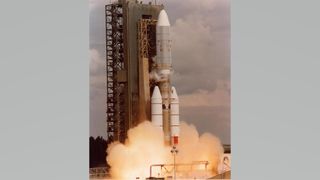
Forty-five years ago, on Aug. 20, 1977, NASA's Voyager 2 spacecraft launched from Cape Canaveral, Florida, on a Titan III-Centaur rocket, embarking on a "grand tour" of the solar system that would include visits to the Jupiter and Saturn systems and would make it the first spacecraft to visit the ice giants Uranus and Neptune and their moons.
Voyager 2 is now 12.1 billion miles (19.5 billion kilometers) away and still sending back data on the distant and unknown heliopause, and scientists are beginning to wonder how long the iconic space probe can keep going.
Designed to take advantage of a once-every-176-years alignment in the 1970s that made it possible for spacecraft to take gravity-assist slingshots from planet to planet across the solar system , the Voyager mission consisted of two probes. Voyager 2 was the first to launch, with Voyager 1 following two weeks later. Both carried the famous " Golden Record ," a 12-inch gold-plated copper disc containing sounds and images portraying the diversity of life and culture on Earth .
Now over 14.5 billion miles (23.3 billion km) away, Voyager 1 is the farthest artificial object from Earth. But Voyager 2 is arguably more iconic because of its incredible multidecade tour of the giant planets.
Related: Celebrate 45 years of Voyager with these amazing images of our solar system (gallery)
Voyager's "grand tour"
Though it launched second, Voyager 1 was so called because it was to reach Jupiter and Saturn first — in March 1979 and November 1980, respectively — before exiting the plane of the planets where it took the famous "Pale Blue Dot" photo . Voyager 2 visited four planets: Jupiter in July 1979, Saturn in August 1981, Uranus in January 1986 and Neptune in August 1989.
"Both Voyager 1 and Voyager 2 provided tremendous legacies for planetary exploration," Jonathan Lunine, a planetary scientist and physicist at Cornell University who is working on the Juno , Europa Clipper and James Webb Space Telescope missions, told Space.com. "Not only in what they accomplished in terms of science, but also demonstrating that it was really possible to explore the outer solar system with a couple of spacecraft."
Get the Space.com Newsletter
Breaking space news, the latest updates on rocket launches, skywatching events and more!
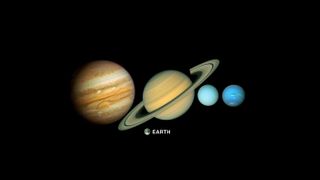
What did the Voyager probes reveal?
Voyager's discoveries are the stuff of legend among planetary scientists, many of whom still rely on the unique images from the spacecraft's wide-angle and narrow-angle cameras. The probes spotted volcanoes on Jupiter's moon Io , discovered that Jupiter's Great Red Spot is an Earth-size storm and found that the gas giant has faint rings. They studied Saturn's rings ; saw the giant moon Titan's thick, Earth-like atmosphere; and revealed the tiny moon Enceladus to be geologically active.
Voyager 2 alone then visited Uranus and Neptune. The spacecraft's first-ever images of Uranus revealed dark rings, the planet's tilted magnetic field and its geologically active moon Miranda. Neptune, meanwhile, was also discovered to have rings and many more moons than scientists initially thought. We also got to see Triton , a geologically active moon that is orbiting "backward" and, like Pluto , is now believed to be a captured dwarf planet from the Kuiper Belt .
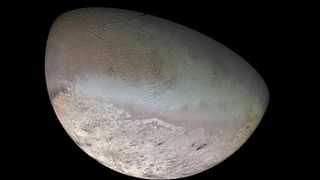
Voyager as a catalyst
In addition to making groundbreaking discoveries, the Voyager mission helped scientists determine what merited deeper exploration. The mission revealed Jupiter to be an incredibly complex planet, thus spurring NASA to launch the Galileo mission in 1989 and the Juno mission in 2011. The Voyager probes' work also helped to inspire the iconic Cassini mission to Saturn.
"Voyager 1's close flyby of Titan was the catalyst for the wonderful Cassini mission to Saturn and its Huygens probe," Lunine said. The Huygens probe landed on the surface of Titan in 2005 and sent back an incredible video .
Voyager 2 has also been a catalyst for investigations into the role of the ice giant planets — not only in the solar system but also in distant star systems, since most of the exoplanets found so far are roughly the size of Neptune and Uranus.
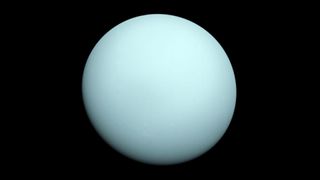
Voyager and NASA today
NASA has spent decades following up on the Voyager missions, and those efforts continue today. The space agency's Dragonfly mission will reach Titan, Saturn's largest moon, in 2034, while Europa Clipper will study Jupiter's ocean moon, first imaged by Voyager, starting in 2030. In April, the National Academies Planetary Science Decadal Survey recommended that NASA send a $4.2 billion Uranus Orbiter and Probe mission to unveil the mysterious ice giant planet and its moons in the 2040s.
It's the latest mission that's a direct consequence of Voyager 2's brief visit to the Uranus system in January 1986. "Voyager 2's flyby of Uranus was a bull's-eye — it went directly through the plane of the moons' orbits because of the orientation of Uranus' axis to the sun ," Lunine said. That made it unlike flybys at other planets, where the probes were able to visit one moon after another. "Voyager 2 got very brief images from these moons, so they're largely unexplored," Lunine said.
Ariel and Miranda, in particular, are thought to be ocean worlds and so would be specifically targeted by the Uranus Orbiter and Probe. "It's been 45 years since the launch of Voyager 1 and Voyager 2, and here we are now finally talking about a Uranus Orbiter and Probe mission," Lunine said. "It seems like a long time because these missions take so long to conceive of, fund, build, launch and execute, but it all comes from the intriguing peeks that we got from Voyager 2."
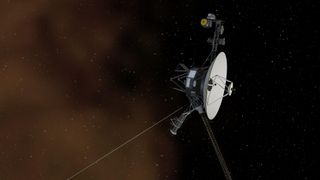
How long will Voyager last?
Both Voyager 1 and Voyager 2 still communicate with NASA's Deep Space Network (which itself was created to communicate with Voyager 2 at Uranus and Neptune), receiving routine commands and occasionally transmitting data to Earth. "We are still getting data from Voyager," Stamatios Krimigis, principal investigator for the Voyager 1 and 2 probes and the Voyager Interstellar Mission, said during a news conference held at COSPAR 22 in July. "We're looking forward to getting data for probably another five or six years."
— What's next for NASA's Voyager 2 in interstellar space?
— Scientists' predictions for the long-term future of the Voyager Golden Records will blow your mind
— NASA's twin Voyager probes are nearly 45 — and facing some hard decisions
Around the mid- to late 2020s , the probes' scientific instruments will be entirely switched off, and eventually, the spacecraft will go cold and silent — but their journeys into interstellar space will continue indefinitely. "My motto is, I want to be here after Voyager passes on," said Krimigis, who is in his 80s. "But I'm not sure that's going to happen."
In around 300 years, Voyager 1 and 2 will enter the Oort cloud , the sphere of comets surrounding the solar system. About 30,000 years later, they'll exit the neighborhood and silently orbit the center of the Milky Way for millions of years.
Their scientific work may be almost over, but the Voyager spacecraft have only just begun their journeys into the cosmos.
Follow us on Twitter @Spacedotcom and on Facebook .
Join our Space Forums to keep talking space on the latest missions, night sky and more! And if you have a news tip, correction or comment, let us know at: [email protected].

Jamie is an experienced science, technology and travel journalist and stargazer who writes about exploring the night sky, solar and lunar eclipses, moon-gazing, astro-travel, astronomy and space exploration. He is the editor of WhenIsTheNextEclipse.com and author of A Stargazing Program For Beginners , and is a senior contributor at Forbes. His special skill is turning tech-babble into plain English.
Satellites watch as 4th global coral bleaching event unfolds (image)
Happy Earth Day 2024! NASA picks 6 new airborne missions to study our changing planet
Satellites spot clusters of 'spiders' sprawled across Mars' Inca City (photo)
Most Popular
- 2 5 sci-fi movies that weren't great but still deserve a sequel
- 3 NASA begins delivering 1st Artemis Moon Trees to be planted across United States
- 4 Superheroes fight acid-spewing xenomorphs in Marvel Comics' 'Aliens vs. Avengers'
- 5 James Webb Space Telescope discovers some early universe galaxies grew up surprisingly fast
- Skip to main content
- Keyboard shortcuts for audio player
Well, hello, Voyager 1! The venerable spacecraft is once again making sense

Nell Greenfieldboyce

Members of the Voyager team celebrate at NASA's Jet Propulsion Laboratory after receiving data about the health and status of Voyager 1 for the first time in months. NASA/JPL-Caltech hide caption
Members of the Voyager team celebrate at NASA's Jet Propulsion Laboratory after receiving data about the health and status of Voyager 1 for the first time in months.
NASA says it is once again able to get meaningful information back from the Voyager 1 probe, after months of troubleshooting a glitch that had this venerable spacecraft sending home messages that made no sense.
The Voyager 1 and Voyager 2 probes launched in 1977 on a mission to study Jupiter and Saturn but continued onward through the outer reaches of the solar system. In 2012, Voyager 1 became the first spacecraft to enter interstellar space, the previously unexplored region between the stars. (Its twin, traveling in a different direction, followed suit six years later.)
Voyager 1 had been faithfully sending back readings about this mysterious new environment for years — until November, when its messages suddenly became incoherent .

NASA's Voyager 1 spacecraft is talking nonsense. Its friends on Earth are worried
It was a serious problem that had longtime Voyager scientists worried that this historic space mission wouldn't be able to recover. They'd hoped to be able to get precious readings from the spacecraft for at least a few more years, until its power ran out and its very last science instrument quit working.
For the last five months, a small team at NASA's Jet Propulsion Laboratory in California has been working to fix it. The team finally pinpointed the problem to a memory chip and figured out how to restore some essential software code.
"When the mission flight team heard back from the spacecraft on April 20, they saw that the modification worked: For the first time in five months, they have been able to check the health and status of the spacecraft," NASA stated in an update.
The usable data being returned so far concerns the workings of the spacecraft's engineering systems. In the coming weeks, the team will do more of this software repair work so that Voyager 1 will also be able to send science data, letting researchers once again see what the probe encounters as it journeys through interstellar space.

After a 12.3 billion-mile 'shout,' NASA regains full contact with Voyager 2
- interstellar mission

- The Contents
- The Making of
- Where Are They Now
- Frequently Asked Questions
- Q & A with Ed Stone
golden record
Where are they now.
- frequently asked questions
- Q&A with Ed Stone
The Voyager Planetary Mission
The twin spacecraft Voyager 1 and Voyager 2 were launched by NASA in separate months in the summer of 1977 from Cape Canaveral, Florida. As originally designed, the Voyagers were to conduct closeup studies of Jupiter and Saturn, Saturn's rings, and the larger moons of the two planets.
To accomplish their two-planet mission, the spacecraft were built to last five years. But as the mission went on, and with the successful achievement of all its objectives, the additional flybys of the two outermost giant planets, Uranus and Neptune, proved possible -- and irresistible to mission scientists and engineers at the Voyagers' home at the Jet Propulsion Laboratory in Pasadena, California.
As the spacecraft flew across the solar system, remote-control reprogramming was used to endow the Voyagers with greater capabilities than they possessed when they left the Earth. Their two-planet mission became four. Their five-year lifetimes stretched to 12 and more.
Eventually, between them, Voyager 1 and 2 would explore all the giant outer planets of our solar system, 48 of their moons, and the unique systems of rings and magnetic fields those planets possess.
Had the Voyager mission ended after the Jupiter and Saturn flybys alone, it still would have provided the material to rewrite astronomy textbooks. But having doubled their already ambitious itineraries, the Voyagers returned to Earth information over the years that has revolutionized the science of planetary astronomy, helping to resolve key questions while raising intriguing new ones about the origin and evolution of the planets in our solar system.
History of the Voyager Mission
The Voyager mission was designed to take advantage of a rare geometric arrangement of the outer planets in the late 1970s and the 1980s which allowed for a four-planet tour for a minimum of propellant and trip time. This layout of Jupiter, Saturn, Uranus and Neptune, which occurs about every 175 years, allows a spacecraft on a particular flight path to swing from one planet to the next without the need for large onboard propulsion systems. The flyby of each planet bends the spacecraft's flight path and increases its velocity enough to deliver it to the next destination. Using this "gravity assist" technique, first demonstrated with NASA's Mariner 10 Venus/Mercury mission in 1973-74, the flight time to Neptune was reduced from 30 years to 12.
While the four-planet mission was known to be possible, it was deemed to be too expensive to build a spacecraft that could go the distance, carry the instruments needed and last long enough to accomplish such a long mission. Thus, the Voyagers were funded to conduct intensive flyby studies of Jupiter and Saturn only. More than 10,000 trajectories were studied before choosing the two that would allow close flybys of Jupiter and its large moon Io, and Saturn and its large moon Titan; the chosen flight path for Voyager 2 also preserved the option to continue on to Uranus and Neptune.
From the NASA Kennedy Space Center at Cape Canaveral, Florida, Voyager 2 was launched first, on August 20, 1977; Voyager 1 was launched on a faster, shorter trajectory on September 5, 1977. Both spacecraft were delivered to space aboard Titan-Centaur expendable rockets.
The prime Voyager mission to Jupiter and Saturn brought Voyager 1 to Jupiter on March 5, 1979, and Saturn on November 12, 1980, followed by Voyager 2 to Jupiter on July 9, 1979, and Saturn on August 25, 1981.
Voyager 1's trajectory, designed to send the spacecraft closely past the large moon Titan and behind Saturn's rings, bent the spacecraft's path inexorably northward out of the ecliptic plane -- the plane in which most of the planets orbit the Sun. Voyager 2 was aimed to fly by Saturn at a point that would automatically send the spacecraft in the direction of Uranus.
After Voyager 2's successful Saturn encounter, it was shown that Voyager 2 would likely be able to fly on to Uranus with all instruments operating. NASA provided additional funding to continue operating the two spacecraft and authorized JPL to conduct a Uranus flyby. Subsequently, NASA also authorized the Neptune leg of the mission, which was renamed the Voyager Neptune Interstellar Mission.
Voyager 2 encountered Uranus on January 24, 1986, returning detailed photos and other data on the planet, its moons, magnetic field and dark rings. Voyager 1, meanwhile, continues to press outward, conducting studies of interplanetary space. Eventually, its instruments may be the first of any spacecraft to sense the heliopause -- the boundary between the end of the Sun's magnetic influence and the beginning of interstellar space. (Voyager 1 entered Interstellar Space on August 25, 2012.)
Following Voyager 2's closest approach to Neptune on August 25, 1989, the spacecraft flew southward, below the ecliptic plane and onto a course that will take it, too, to interstellar space. Reflecting the Voyagers' new transplanetary destinations, the project is now known as the Voyager Interstellar Mission.
Voyager 1 is now leaving the solar system, rising above the ecliptic plane at an angle of about 35 degrees at a rate of about 520 million kilometers (about 320 million miles) a year. Voyager 2 is also headed out of the solar system, diving below the ecliptic plane at an angle of about 48 degrees and a rate of about 470 million kilometers (about 290 million miles) a year.
Both spacecraft will continue to study ultraviolet sources among the stars, and the fields and particles instruments aboard the Voyagers will continue to search for the boundary between the Sun's influence and interstellar space. The Voyagers are expected to return valuable data for two or three more decades. Communications will be maintained until the Voyagers' nuclear power sources can no longer supply enough electrical energy to power critical subsystems.
The cost of the Voyager 1 and 2 missions -- including launch, mission operations from launch through the Neptune encounter and the spacecraft's nuclear batteries (provided by the Department of Energy) -- is $865 million. NASA budgeted an additional $30 million to fund the Voyager Interstellar Mission for two years following the Neptune encounter.
Voyagers 1 and 2 are identical spacecraft. Each is equipped with instruments to conduct 10 different experiments. The instruments include television cameras, infrared and ultraviolet sensors, magnetometers, plasma detectors, and cosmic-ray and charged-particle sensors. In addition, the spacecraft radio is used to conduct experiments.
The Voyagers travel too far from the Sun to use solar panels; instead, they were equipped with power sources called radioisotope thermoelectric generators (RTGs). These devices, used on other deep space missions, convert the heat produced from the natural radioactive decay of plutonium into electricity to power the spacecraft instruments, computers, radio and other systems.
The spacecraft are controlled and their data returned through the Deep Space Network (DSN), a global spacecraft tracking system operated by JPL for NASA. DSN antenna complexes are located in California's Mojave Desert; near Madrid, Spain; and in Tidbinbilla, near Canberra, Australia.
The Voyager project manager for the Interstellar Mission is George P. Textor of JPL. The Voyager project scientist is Dr. Edward C. Stone of the California Institute of Technology. The assistant project scientist for the Jupiter flyby was Dr. Arthur L. Lane, followed by Dr. Ellis D. Miner for the Saturn, Uranus and Neptune encounters. Both are with JPL.
JUPITER Voyager 1 made its closest approach to Jupiter on March 5, 1979, and Voyager 2 followed with its closest approach occurring on July 9, 1979. The first spacecraft flew within 277,400 kilometers (172,368 miles) of the planet's cloud tops, and Voyager 2 came within 650,180 kilometers (404,003 miles).
Jupiter is the largest planet in the solar system, composed mainly of hydrogen and helium, with small amounts of methane, ammonia, water vapor, traces of other compounds and a core of melted rock and ice. Colorful latitudinal bands and atmospheric clouds and storms illustrate Jupiter's dynamic weather system. The giant planet is now known to possess 16 moons. The planet completes one orbit of the Sun each 11.8 years and its day is 9 hours, 55 minutes.
Although astronomers had studied Jupiter through telescopes on Earth for centuries, scientists were surprised by many of the Voyager findings.
The Great Red Spot was revealed as a complex storm moving in a counterclockwise direction. An array of other smaller storms and eddies were found throughout the banded clouds.
Discovery of active volcanism on the satellite Io was easily the greatest unexpected discovery at Jupiter. It was the first time active volcanoes had been seen on another body in the solar system. Together, the Voyagers observed the eruption of nine volcanoes on Io, and there is evidence that other eruptions occurred between the Voyager encounters.
Plumes from the volcanoes extend to more than 300 kilometers (190 miles) above the surface. The Voyagers observed material ejected at velocities up to a kilometer per second.
Io's volcanoes are apparently due to heating of the satellite by tidal pumping. Io is perturbed in its orbit by Europa and Ganymede, two other large satellites nearby, then pulled back again into its regular orbit by Jupiter. This tug-of-war results in tidal bulging as great as 100 meters (330 feet) on Io's surface, compared with typical tidal bulges on Earth of one meter (three feet).
It appears that volcanism on Io affects the entire jovian system, in that it is the primary source of matter that pervades Jupiter's magnetosphere -- the region of space surrounding the planet influenced by the jovian magnetic field. Sulfur, oxygen and sodium, apparently erupted by Io's many volcanoes and sputtered off the surface by impact of high-energy particles, were detected as far away as the outer edge of the magnetosphere millions of miles from the planet itself.
Europa displayed a large number of intersecting linear features in the low-resolution photos from Voyager 1. At first, scientists believed the features might be deep cracks, caused by crustal rifting or tectonic processes. The closer high-resolution photos from Voyager 2, however, left scientists puzzled: The features were so lacking in topographic relief that as one scientist described them, they "might have been painted on with a felt marker." There is a possibility that Europa may be internally active due to tidal heating at a level one-tenth or less than that of Io. Europa is thought to have a thin crust (less than 30 kilometers or 18 miles thick) of water ice, possibly floating on a 50-kilometer-deep (30-mile) ocean.
Ganymede turned out to be the largest moon in the solar system, with a diameter measuring 5,276 kilometers (3,280 miles). It showed two distinct types of terrain -- cratered and grooved -- suggesting to scientists that Ganymede's entire icy crust has been under tension from global tectonic processes.
Callisto has a very old, heavily cratered crust showing remnant rings of enormous impact craters. The largest craters have apparently been erased by the flow of the icy crust over geologic time. Almost no topographic relief is apparent in the ghost remnants of the immense impact basins, identifiable only by their light color and the surrounding subdued rings of concentric ridges.
A faint, dusty ring of material was found around Jupiter. Its outer edge is 129,000 kilometers (80,000 miles) from the center of the planet, and it extends inward about 30,000 kilometers (18,000 miles).
Two new, small satellites, Adrastea and Metis, were found orbiting just outside the ring. A third new satellite, Thebe, was discovered between the orbits of Amalthea and Io.
Jupiter's rings and moons exist within an intense radiation belt of electrons and ions trapped in the planet's magnetic field. These particles and fields comprise the jovian magnetosphere, or magnetic environment, which extends three to seven million kilometers toward the Sun, and stretches in a windsock shape at least as far as Saturn's orbit -- a distance of 750 million kilometers (460 million miles).
As the magnetosphere rotates with Jupiter, it sweeps past Io and strips away about 1,000 kilograms (one ton) of material per second. The material forms a torus, a doughnut-shaped cloud of ions that glow in the ultraviolet. Some of the torus's heavy ions migrate outward, and their pressure inflates the Jovian magnetosphere, while the more energetic sulfur and oxygen ions fall along the magnetic field into the planet's atmosphere, resulting in auroras.
Io acts as an electrical generator as it moves through Jupiter's magnetic field, developing 400,000 volts across its diameter and generating an electric current of 3 million amperes that flows along the magnetic field to the planet's ionosphere.
SATURN The Voyager 1 and 2 Saturn flybys occurred nine months apart, with the closest approaches falling on November 12 and August 25, 1981. Voyager 1 flew within 64,200 kilometers (40,000 miles) of the cloud tops, while Voyager 2 came within 41,000 kilometers (26,000 miles).
Saturn is the second largest planet in the solar system. It takes 29.5 Earth years to complete one orbit of the Sun, and its day was clocked at 10 hours, 39 minutes. Saturn is known to have at least 17 moons and a complex ring system. Like Jupiter, Saturn is mostly hydrogen and helium. Its hazy yellow hue was found to be marked by broad atmospheric banding similar to but much fainter than that found on Jupiter. Close scrutiny by Voyager's imaging systems revealed long-lived ovals and other atmospheric features generally smaller than those on Jupiter.
Perhaps the greatest surprises and the most puzzles were found by the Voyagers in Saturn's rings. It is thought that the rings formed from larger moons that were shattered by impacts of comets and meteoroids. The resulting dust and boulder- to house-size particles have accumulated in a broad plane around the planet varying in density.
The irregular shapes of Saturn's eight smallest moons indicates that they too are fragments of larger bodies. Unexpected structure such as kinks and spokes were found in addition to thin rings and broad, diffuse rings not observed from Earth. Much of the elaborate structure of some of the rings is due to the gravitational effects of nearby satellites. This phenomenon is most obviously demonstrated by the relationship between the F-ring and two small moons that "shepherd" the ring material. The variation in the separation of the moons from the ring may the ring's kinked appearance. Shepherding moons were also found by Voyager 2 at Uranus.
Radial, spoke-like features in the broad B-ring were found by the Voyagers. The features are believed to be composed of fine, dust-size particles. The spokes were observed to form and dissipate in time-lapse images taken by the Voyagers. While electrostatic charging may create spokes by levitating dust particles above the ring, the exact cause of the formation of the spokes is not well understood.
Winds blow at extremely high speeds on Saturn -- up to 1,800 kilometers per hour (1,100 miles per hour). Their primarily easterly direction indicates that the winds are not confined to the top cloud layer but must extend at least 2,000 kilometers (1,200 miles) downward into the atmosphere. The characteristic temperature of the atmosphere is 95 kelvins.
Saturn holds a wide assortment of satellites in its orbit, ranging from Phoebe, a small moon that travels in a retrograde orbit and is probably a captured asteroid, to Titan, the planet-sized moon with a thick nitrogen-methane atmosphere. Titan's surface temperature and pressure are 94 kelvins (-292 Fahrenheit) and 1.5 atmospheres. Photochemistry converts some atmospheric methane to other organic molecules, such as ethane, that is thought to accumulate in lakes or oceans. Other more complex hydrocarbons form the haze particles that eventually fall to the surface, coating it with a thick layer of organic matter. The chemistry in Titan's atmosphere may strongly resemble that which occurred on Earth before life evolved.
The most active surface of any moon seen in the Saturn system was that of Enceladus. The bright surface of this moon, marked by faults and valleys, showed evidence of tectonically induced change. Voyager 1 found the moon Mimas scarred with a crater so huge that the impact that caused it nearly broke the satellite apart.
Saturn's magnetic field is smaller than Jupiter's, extending only one or two million kilometers. The axis of the field is almost perfectly aligned with the rotation axis of the planet.
URANUS In its first solo planetary flyby, Voyager 2 made its closest approach to Uranus on January 24, 1986, coming within 81,500 kilometers (50,600 miles) of the planet's cloud tops.
Uranus is the third largest planet in the solar system. It orbits the Sun at a distance of about 2.8 billion kilometers (1.7 billion miles) and completes one orbit every 84 years. The length of a day on Uranus as measured by Voyager 2 is 17 hours, 14 minutes.
Uranus is distinguished by the fact that it is tipped on its side. Its unusual position is thought to be the result of a collision with a planet-sized body early in the solar system's history. Given its odd orientation, with its polar regions exposed to sunlight or darkness for long periods, scientists were not sure what to expect at Uranus.
Voyager 2 found that one of the most striking influences of this sideways position is its effect on the tail of the magnetic field, which is itself tilted 60 degrees from the planet's axis of rotation. The magnetotail was shown to be twisted by the planet's rotation into a long corkscrew shape behind the planet.
The presence of a magnetic field at Uranus was not known until Voyager's arrival. The intensity of the field is roughly comparable to that of Earth's, though it varies much more from point to point because of its large offset from the center of Uranus. The peculiar orientation of the magnetic field suggests that the field is generated at an intermediate depth in the interior where the pressure is high enough for water to become electrically conducting.
Radiation belts at Uranus were found to be of an intensity similar to those at Saturn. The intensity of radiation within the belts is such that irradiation would quickly darken (within 100,000 years) any methane trapped in the icy surfaces of the inner moons and ring particles. This may have contributed to the darkened surfaces of the moons and ring particles, which are almost uniformly gray in color.
A high layer of haze was detected around the sunlit pole, which also was found to radiate large amounts of ultraviolet light, a phenomenon dubbed "dayglow." The average temperature is about 60 kelvins (-350 degrees Fahrenheit). Surprisingly, the illuminated and dark poles, and most of the planet, show nearly the same temperature at the cloud tops.
Voyager found 10 new moons, bringing the total number to 15. Most of the new moons are small, with the largest measuring about 150 kilometers (about 90 miles) in diameter.
The moon Miranda, innermost of the five large moons, was revealed to be one of the strangest bodies yet seen in the solar system. Detailed images from Voyager's flyby of the moon showed huge fault canyons as deep as 20 kilometers (12 miles), terraced layers, and a mixture of old and young surfaces. One theory holds that Miranda may be a reaggregration of material from an earlier time when the moon was fractured by an violent impact.
The five large moons appear to be ice-rock conglomerates like the satellites of Saturn. Titania is marked by huge fault systems and canyons indicating some degree of geologic, probably tectonic, activity in its history. Ariel has the brightest and possibly youngest surface of all the Uranian moons and also appears to have undergone geologic activity that led to many fault valleys and what seem to be extensive flows of icy material. Little geologic activity has occurred on Umbriel or Oberon, judging by their old and dark surfaces.
All nine previously known rings were studied by the spacecraft and showed the Uranian rings to be distinctly different from those at Jupiter and Saturn. The ring system may be relatively young and did not form at the same time as Uranus. Particles that make up the rings may be remnants of a moon that was broken by a high-velocity impact or torn up by gravitational effects.
NEPTUNE When Voyager flew within 5,000 kilometers (3,000 miles) of Neptune on August 25, 1989, the planet was the most distant member of the solar system from the Sun. (Pluto once again will become most distant in 1999.)
Neptune orbits the Sun every 165 years. It is the smallest of our solar system's gas giants. Neptune is now known to have eight moons, six of which were found by Voyager. The length of a Neptunian day has been determined to be 16 hours, 6.7 minutes.
Even though Neptune receives only three percent as much sunlight as Jupiter does, it is a dynamic planet and surprisingly showed several large, dark spots reminiscent of Jupiter's hurricane-like storms. The largest spot, dubbed the Great Dark Spot, is about the size of Earth and is similar to the Great Red Spot on Jupiter. A small, irregularly shaped, eastward-moving cloud was observed "scooting" around Neptune every 16 hours or so; this "scooter," as Voyager scientists called it, could be a cloud plume rising above a deeper cloud deck.
Long, bright clouds, similar to cirrus clouds on Earth, were seen high in Neptune's atmosphere. At low northern latitudes, Voyager captured images of cloud streaks casting their shadows on cloud decks below.
The strongest winds on any planet were measured on Neptune. Most of the winds there blow westward, or opposite to the rotation of the planet. Near the Great Dark Spot, winds blow up to 2,000 kilometers (1,200 miles) an hour.
The magnetic field of Neptune, like that of Uranus, turned out to be highly tilted -- 47 degrees from the rotation axis and offset at least 0.55 radii (about 13,500 kilometers or 8,500 miles) from the physical center. Comparing the magnetic fields of the two planets, scientists think the extreme orientation may be characteristic of flows in the interiors of both Uranus and Neptune -- and not the result in Uranus's case of that planet's sideways orientation, or of any possible field reversals at either planet. Voyager's studies of radio waves caused by the magnetic field revealed the length of a Neptunian day. The spacecraft also detected auroras, but much weaker than those on Earth and other planets.
Triton, the largest of the moons of Neptune, was shown to be not only the most intriguing satellite of the Neptunian system, but one of the most interesting in all the solar system. It shows evidence of a remarkable geologic history, and Voyager 2 images showed active geyser-like eruptions spewing invisible nitrogen gas and dark dust particles several kilometers into the tenuous atmosphere. Triton's relatively high density and retrograde orbit offer strong evidence that Triton is not an original member of Neptune's family but is a captured object. If that is the case, tidal heating could have melted Triton in its originally eccentric orbit, and the moon might even have been liquid for as long as one billion years after its capture by Neptune.
An extremely thin atmosphere extends about 800 kilometer (500 miles) above Triton's surface. Nitrogen ice particles may form thin clouds a few kilometers above the surface. The atmospheric pressure at the surface is about 14 microbars, 1/70,000th the surface pressure on Earth. The surface temperature is about 38 kelvins (-391 degrees Fahrenheit) the coldest temperature of any body known in the solar system.
The new moons found at Neptune by Voyager are all small and remain close to Neptune's equatorial plane. Names for the new moons were selected from mythology's water deities by the International Astronomical Union, they are: Naiad, Thalassa, Despina, Galatea, Larissa, Proteus.
Voyager 2 solved many of the questions scientists had about Neptune's rings. Searches for "ring arcs," or partial rings, showed that Neptune's rings actually are complete, but are so diffuse and the material in them so fine that they could not be fully resolved from Earth. From the outermost in, the rings have been designated Adams, Plateau, Le Verrier and Galle.
Interstellar Mission
The spacecraft are continuing to return data about interplanetary space and some of our stellar neighbors near the edges of the Milky Way.
As the Voyagers cruise gracefully in the solar wind, their fields, particles and waves instruments are studying the space around them. In May 1993, scientists concluded that the plasma wave experiment was picking up radio emissions that originate at the heliopause -- the outer edge of our solar system.
The heliopause is the outermost boundary of the solar wind, where the interstellar medium restricts the outward flow of the solar wind and confines it within a magnetic bubble called the heliosphere. The solar wind is made up of electrically charged atomic particles, composed primarily of ionized hydrogen, that stream outward from the Sun.
Exactly where the heliopause is has been one of the great unanswered questions in space physics. By studying the radio emissions, scientists now theorize the heliopause exists some 90 to 120 astronomical units (AU) from the Sun. (One AU is equal to 150 million kilometers (93 million miles), or the distance from the Earth to the Sun.
The Voyagers have also become space-based ultraviolet observatories and their unique location in the universe gives astronomers the best vantage point they have ever had for looking at celestial objects that emit ultraviolet radiation.
The Ultraviolet Spectrometer (UVS) is the only experiment on the scan platform that is still functioning. The scan platform is parked at a fixed position and is not being articulated. The Infrared Spectrometer and Radiometer (IRIS) heater was turned off to save power on Voyager 1 on December 7, 2011. On January 21, 2014 the Scan Platform Supplemental Heater was also turned off to conserve power. The IRIS heater and the Scan Platform Heater were used to keep UVS warm. The UVS temperature has dropped to below the measurement limits of the sensor; however, UVS is still operating. The scientist expect to continue to receive data from the UVS until 2016, at which time the instrument will be turned off to save power.
Yet there are several other fields and particle instruments that can continue to send back data as long as the spacecraft stay alive. They include: the cosmic ray subsystem, the low-energy charge particle instrument, the magnetometer, the plasma subsystem, the plasma wave subsystem and the planetary radio astronomy instrument. Barring any catastrophic events, JPL should be able to retrieve this information for at least the next 20 and perhaps even the next 30 years.

Suggested Searches
- Climate Change
- Expedition 64
- Mars perseverance
- SpaceX Crew-2
- International Space Station
- View All Topics A-Z
Humans in Space
Earth & climate, the solar system, the universe, aeronautics, learning resources, news & events.

NASA-Led Study Provides New Global Accounting of Earth’s Rivers

NASA’s Hubble Pauses Science Due to Gyro Issue

NASA’s Optical Comms Demo Transmits Data Over 140 Million Miles
- Search All NASA Missions
- A to Z List of Missions
- Upcoming Launches and Landings
- Spaceships and Rockets
- Communicating with Missions
- James Webb Space Telescope
- Hubble Space Telescope
- Why Go to Space
- Astronauts Home
- Commercial Space
- Destinations
- Living in Space
- Explore Earth Science
- Earth, Our Planet
- Earth Science in Action
- Earth Multimedia
- Earth Science Researchers
- Pluto & Dwarf Planets
- Asteroids, Comets & Meteors
- The Kuiper Belt
- The Oort Cloud
- Skywatching
- The Search for Life in the Universe
- Black Holes
- The Big Bang
- Dark Energy & Dark Matter
- Earth Science
- Planetary Science
- Astrophysics & Space Science
- The Sun & Heliophysics
- Biological & Physical Sciences
- Lunar Science
- Citizen Science
- Astromaterials
- Aeronautics Research
- Human Space Travel Research
- Science in the Air
- NASA Aircraft
- Flight Innovation
- Supersonic Flight
- Air Traffic Solutions
- Green Aviation Tech
- Drones & You
- Technology Transfer & Spinoffs
- Space Travel Technology
- Technology Living in Space
- Manufacturing and Materials
- Science Instruments
- For Kids and Students
- For Educators
- For Colleges and Universities
- For Professionals
- Science for Everyone
- Requests for Exhibits, Artifacts, or Speakers
- STEM Engagement at NASA
- NASA's Impacts
- Centers and Facilities
- Directorates
- Organizations
- People of NASA
- Internships
- Our History
- Doing Business with NASA
- Get Involved
- Aeronáutica
- Ciencias Terrestres
- Sistema Solar
- All NASA News
- Video Series on NASA+
- Newsletters
- Social Media
- Media Resources
- Upcoming Launches & Landings
- Virtual Events
- Sounds and Ringtones
- Interactives
- STEM Multimedia

Correction and Clarification of C.26 Rapid Mission Design Studies for Mars Sample Return

NASA’s Commercial Partners Deliver Cargo, Crew for Station Science

NASA Shares Lessons of Human Systems Integration with Industry

Work Underway on Large Cargo Landers for NASA’s Artemis Moon Missions

NASA’s ORCA, AirHARP Projects Paved Way for PACE to Reach Space

Amendment 11: Physical Oceanography not solicited in ROSES-2024

Why is Methane Seeping on Mars? NASA Scientists Have New Ideas

Mars Science Laboratory: Curiosity Rover

Hubble Spots a Magnificent Barred Galaxy

NASA’s Chandra Releases Doubleheader of Blockbuster Hits

Explore the Universe with the First E-Book from NASA’s Fermi

NASA Grant Brings Students at Underserved Institutions to the Stars

NASA Photographer Honored for Thrilling Inverted In-Flight Image

NASA’s Ingenuity Mars Helicopter Team Says Goodbye … for Now

NASA Langley Team to Study Weather During Eclipse Using Uncrewed Vehicles

NASA Data Helps Beavers Build Back Streams

NASA’s Near Space Network Enables PACE Climate Mission to ‘Phone Home’

Washington State High Schooler Wins 2024 NASA Student Art Contest

NASA STEM Artemis Moon Trees

Kiyun Kim: From Intern to Accessibility Advocate

Diez maneras en que los estudiantes pueden prepararse para ser astronautas

Astronauta de la NASA Marcos Berríos

Resultados científicos revolucionarios en la estación espacial de 2023
Voyager, nasa’s longest-lived mission, logs 45 years in space, jet propulsion laboratory, beyond expectations, the long journey, more about the mission.
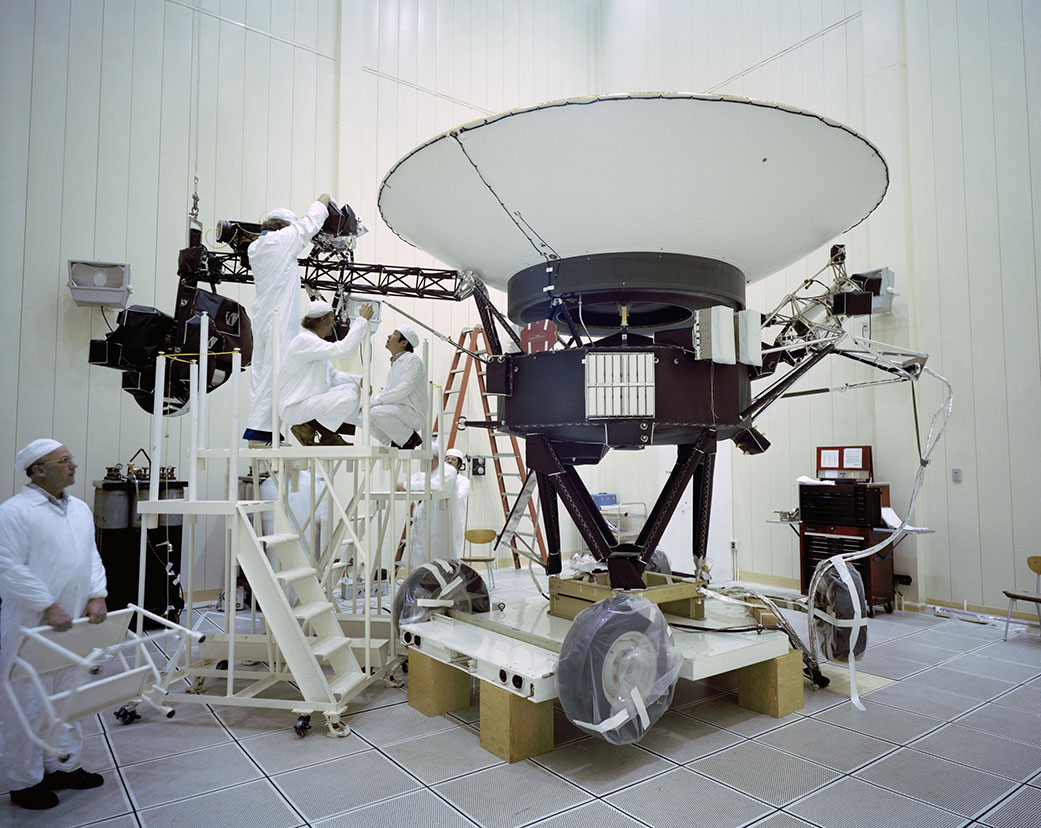
Launched in 1977, the twin Voyager probes are NASA’s longest-operating mission and the only spacecraft ever to explore interstellar space.
NASA’s twin Voyager probes have become, in some ways, time capsules of their era: They each carry an eight-track tape player for recording data, they have about 3 million times less memory than modern cellphones, and they transmit data about 38,000 times slower than a 5G internet connection.
Yet the Voyagers remain on the cutting edge of space exploration. Managed and operated by NASA’s Jet Propulsion Laboratory in Southern California, they are the only probes to ever explore interstellar space – the galactic ocean that our Sun and its planets travel through.
The Sun and the planets reside in the heliosphere, a protective bubble created by the Sun’s magnetic field and the outward flow of solar wind (charged particles from the Sun). Researchers – some of them younger than the two distant spacecraft – are combining Voyager’s observations with data from newer missions to get a more complete picture of our Sun and how the heliosphere interacts with interstellar space.
“The heliophysics mission fleet provides invaluable insights into our Sun, from understanding the corona or the outermost part of the Sun’s atmosphere, to examining the Sun’s impacts throughout the solar system, including here on Earth, in our atmosphere, and on into interstellar space,” said Nicola Fox, director of the Heliophysics Division at NASA Headquarters in Washington. “Over the last 45 years, the Voyager missions have been integral in providing this knowledge and have helped change our understanding of the Sun and its influence in ways no other spacecraft can.”
NASA’s Solar System Interactive lets users see where the Voyagers are right now relative to the planets, the Sun, and other spacecraft. Eyes on the Solar System . Credit: NASA/JPL-Caltech
The Voyagers are also ambassadors, each carrying a golden record containing images of life on Earth, diagrams of basic scientific principles, and audio that includes sounds from nature, greetings in multiple languages, and music. The gold-coated records serve as a cosmic “message in a bottle” for anyone who might encounter the space probes. At the rate gold decays in space and is eroded by cosmic radiation, the records will last more than a billion years.
Voyager 2 launched on Aug. 20, 1977, quickly followed by Voyager 1 on Sept. 5. Both probes traveled to Jupiter and Saturn, with Voyager 1 moving faster and reaching them first. Together, the probes unveiled much about the solar system’s two largest planets and their moons. Voyager 2 also became the first and only spacecraft to fly close to Uranus (in 1986) and Neptune (in 1989), offering humanity remarkable views of – and insights into – these distant worlds.
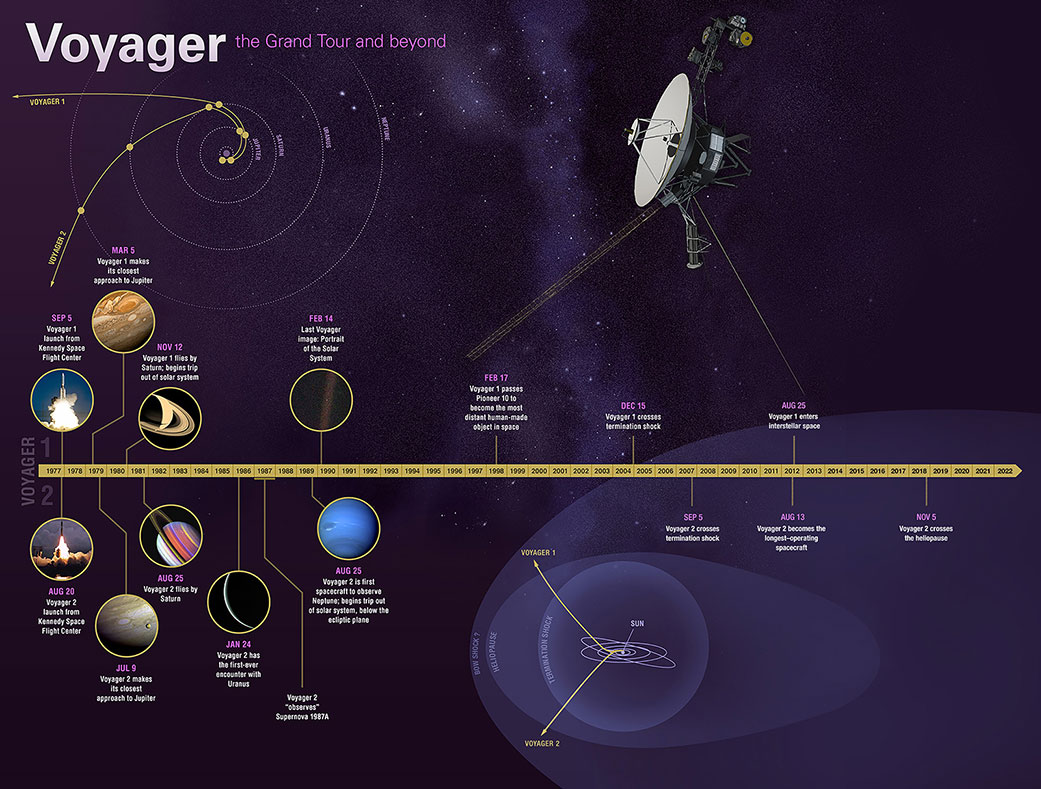
While Voyager 2 was conducting these flybys, Voyager 1 headed toward the boundary of the heliosphere. Upon exiting it in 2012 , Voyager 1 discovered that the heliosphere blocks 70% of cosmic rays, or energetic particles created by exploding stars. Voyager 2, after completing its planetary explorations, continued to the heliosphere boundary, exiting in 2018 . The twin spacecraft’s combined data from this region has challenged previous theories about the exact shape of the heliosphere.
“Today, as both Voyagers explore interstellar space, they are providing humanity with observations of uncharted territory,” said Linda Spilker, Voyager’s deputy project scientist at JPL. “This is the first time we’ve been able to directly study how a star, our Sun, interacts with the particles and magnetic fields outside our heliosphere, helping scientists understand the local neighborhood between the stars, upending some of the theories about this region, and providing key information for future missions.”
Over the years, the Voyager team has grown accustomed to surmounting challenges that come with operating such mature spacecraft, sometimes calling upon retired colleagues for their expertise or digging through documents written decades ago.
Each Voyager is powered by a radioisotope thermoelectric generator containing plutonium, which gives off heat that is converted to electricity. As the plutonium decays, the heat output decreases and the Voyagers lose electricity. To compensate , the team turned off all nonessential systems and some once considered essential, including heaters that protect the still-operating instruments from the frigid temperatures of space. All five of the instruments that have had their heaters turned off since 2019 are still working, despite being well below the lowest temperatures they were ever tested at.
Recently, Voyager 1 began experiencing an issue that caused status information about one of its onboard systems to become garbled. Despite this, the system and spacecraft otherwise continue to operate normally, suggesting the problem is with the production of the status data, not the system itself. The probe is still sending back science observations while the engineering team tries to fix the problem or find a way to work around it.
“The Voyagers have continued to make amazing discoveries, inspiring a new generation of scientists and engineers,” said Suzanne Dodd, project manager for Voyager at JPL. “We don’t know how long the mission will continue, but we can be sure that the spacecraft will provide even more scientific surprises as they travel farther away from the Earth.”
A division of Caltech in Pasadena, JPL built and operates the Voyager spacecraft. The Voyager missions are a part of the NASA Heliophysics System Observatory, sponsored by the Heliophysics Division of the Science Mission Directorate in Washington.
For more information about the Voyager spacecraft, visit:
https://www.nasa.gov/voyager
Calla Cofield Jet Propulsion Laboratory, Pasadena, Calif. 626-808-2469 [email protected]
After months of silence, Voyager 1 has returned NASA’s calls

- Show more sharing options
- Copy Link URL Copied!
For the last five months, it seemed very possible that a 46-year-old conversation had finally reached its end.
Since its launch from Kennedy Space Center on Sept. 5, 1977, NASA’s Voyager 1 spacecraft has diligently sent regular updates to Earth on the health of its systems and data collected from its onboard instruments.
But in November, the craft went quiet.
Voyager 1 is now some 15 billion miles away from Earth. Somewhere in the cold interstellar space between our sun and the closest stars, its flight data system stopped communicating with the part of the probe that allows it to send signals back to Earth. Engineers at the Jet Propulsion Laboratory in La Cañada Flintridge could tell that Voyager 1 was getting its messages, but nothing was coming back.
“We’re to the point where the hardware is starting to age,” said Linda Spilker, the project scientist for the Voyager mission. “It’s like working on an antique car, from 15 billion miles away.”
Week after week, engineers sent troubleshooting commands to the spacecraft, each time patiently waiting the 45 hours it takes to get a response here on Earth — 22.5 hours traveling at the speed of light to reach the probe, and 22.5 hours back.

Science & Medicine
This space artist created the Golden Record and changed the way we see the universe
Space artist Jon Lomberg has produced work that attempts to visualize what we can’t truly see, and to communicate with creatures we can’t yet imagine.
July 26, 2023
By March, the team had figured out that a memory chip that stored some of the flight data system’s software code had failed, turning the craft’s outgoing communications into gibberish.
A long-distance repair wasn’t possible. There wasn’t enough space anywhere in the system to shift the code in its entirety. So after manually reviewing the code line by line, engineers broke it up and tucked the pieces into the available slots of memory.
They sent a command to Voyager on Thursday. In the early morning hours Saturday, the team gathered around a conference table at JPL: laptops open, coffee and boxes of doughnuts in reach.
At 6:41 a.m., data from the craft showed up on their screens. The fix had worked .
“We went from very quiet and just waiting patiently to cheers and high-fives and big smiles and sighs of relief,” Spilker said. “I’m very happy to once again have a meaningful conversation with Voyager 1.”
Voyager 1 is one of two identical space probes. Voyager 2, launched two weeks before Voyager 1, is now about 13 billion miles from Earth, the two crafts’ trajectories having diverged somewhere around Saturn. (Voyager 2 continued its weekly communications uninterrupted during Voyager 1’s outage.)

Space shuttle Endeavour is lifted into the sky, takes final position as star of new museum wing
A shrink-wrapped Endeavour was hoisted and then carefully placed in its final location Tuesday at the still-under-construction Samuel Oschin Air and Space Center.
Jan. 30, 2024
They are the farthest-flung human-made objects in the universe, having traveled farther from their home planet than anything else this species has built. The task of keeping communications going grows harder with each passing day. Every 24 hours, Voyager 1 travels 912,000 miles farther away from us. As that distance grows, the signal becomes slower and weaker.
When the probe visited Jupiter in 1979, it was sending back data at a rate of 115.2 kilobits per second, Spilker said. Today, 45 years and more than 14 billion miles later, data come back at a rate of 40 bits per second.
The team is cautiously optimistic that the probes will stay in contact for three more years, long enough to celebrate the mission’s 50th anniversary in 2027, Spilker said. They could conceivably last until the 2030s.
The conversation can’t last forever. Microscopic bits of silica keep clogging up the thrusters that keep the probes’ antennas pointed toward Earth, which could end communications. The power is running low. Eventually, the day will come when both Voyagers stop transmitting data to Earth, and the first part of their mission ends.
But on the day each craft goes quiet, they begin a new era, one that could potentially last far longer. Each probe is equipped with a metallic album cover containing a Golden Record , a gold-plated copper disk inscribed with sounds and images meant to describe the species that built the Voyagers and the planet they came from.
Erosion in space is negligible; the images could be readable for another billion years or more. Should any other intelligent life form encounter one of the Voyager probes and have a means of retrieving the data from the record, they will at the very least have a chance to figure out who sent them — even if our species is by that time long gone.
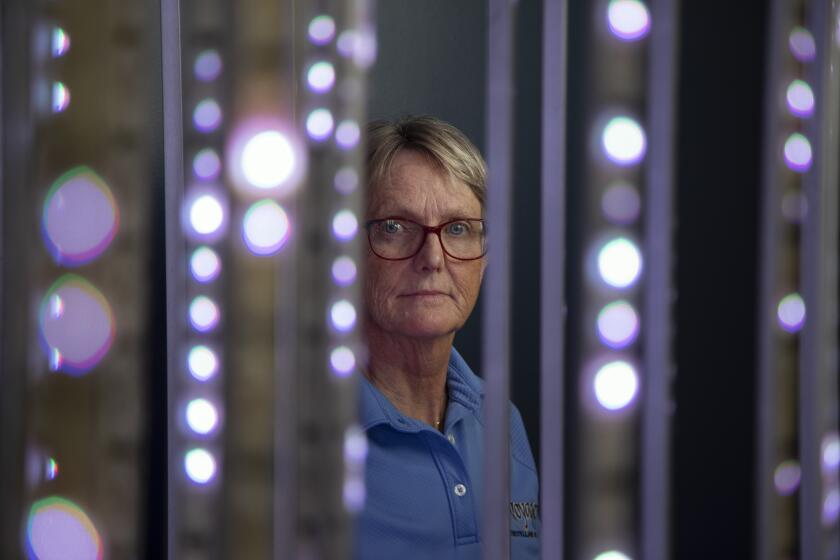
JPL tries to keep Voyager space probes from disconnecting the world’s longest phone call
Keeping in touch with NASA’s two aging Voyager spacecraft is getting harder to do as they get farther away and their power sources dwindle.
Sept. 3, 2022
More to Read

Too expensive, too slow: NASA asks for help with JPL’s Mars Sample Return mission
April 15, 2024

NASA’s attempt to bring home part of Mars is unprecedented. The mission’s problems are not
March 25, 2024
Budget deal for NASA offers glimmer of hope for JPL’s Mars Sample Return mission
March 6, 2024

Corinne Purtill is a science and medicine reporter for the Los Angeles Times. Her writing on science and human behavior has appeared in the New Yorker, the New York Times, Time Magazine, the BBC, Quartz and elsewhere. Before joining The Times, she worked as the senior London correspondent for GlobalPost (now PRI) and as a reporter and assignment editor at the Cambodia Daily in Phnom Penh. She is a native of Southern California and a graduate of Stanford University.
More From the Los Angeles Times

Commencement speakers launch boycott of USC satellite graduation ceremonies
April 28, 2024

Post Malone’s all-star Stagecoach set includes Brad Paisley, Dwight Yoakam
April 27, 2024

L.A. supervisors oppose plan to eradicate Catalina deer by shooting them from helicopters
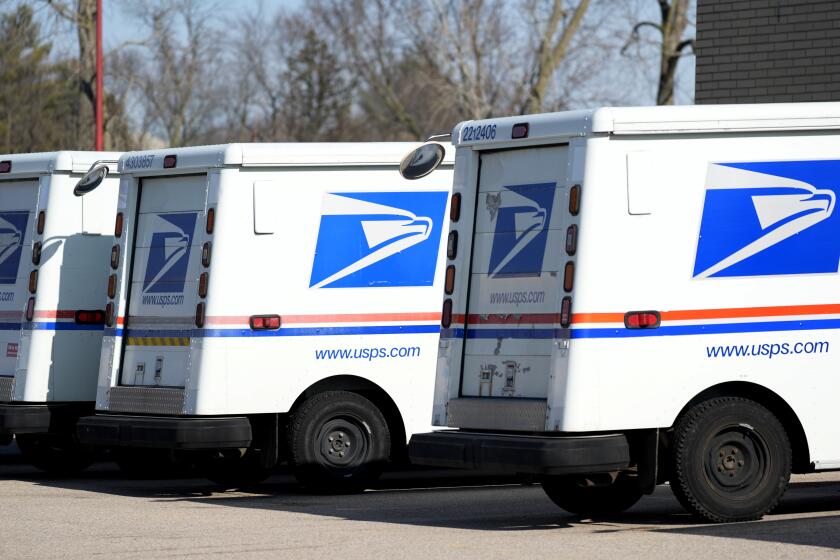
Southern California woman pleads guilty in $150-million counterfeit postage scheme
- Work & Careers
- Life & Arts
Become an FT subscriber
Try unlimited access Only $1 for 4 weeks
Then $75 per month. Complete digital access to quality FT journalism on any device. Cancel anytime during your trial.
- Global news & analysis
- Expert opinion
- Special features
- FirstFT newsletter
- Videos & Podcasts
- Android & iOS app
- FT Edit app
- 10 gift articles per month
Explore more offers.
Standard digital.
- FT Digital Edition
Premium Digital
Print + premium digital, weekend print + standard digital, weekend print + premium digital.
Today's FT newspaper for easy reading on any device. This does not include ft.com or FT App access.
- 10 additional gift articles per month
- Global news & analysis
- Exclusive FT analysis
- Videos & Podcasts
- FT App on Android & iOS
- Everything in Standard Digital
- Premium newsletters
- Weekday Print Edition
- FT Weekend Print delivery
- Everything in Premium Digital
Essential digital access to quality FT journalism on any device. Pay a year upfront and save 20%.
- Everything in Print
Complete digital access to quality FT journalism with expert analysis from industry leaders. Pay a year upfront and save 20%.
Terms & Conditions apply
Explore our full range of subscriptions.
Why the ft.
See why over a million readers pay to read the Financial Times.
International Edition

Interstellar Messengers
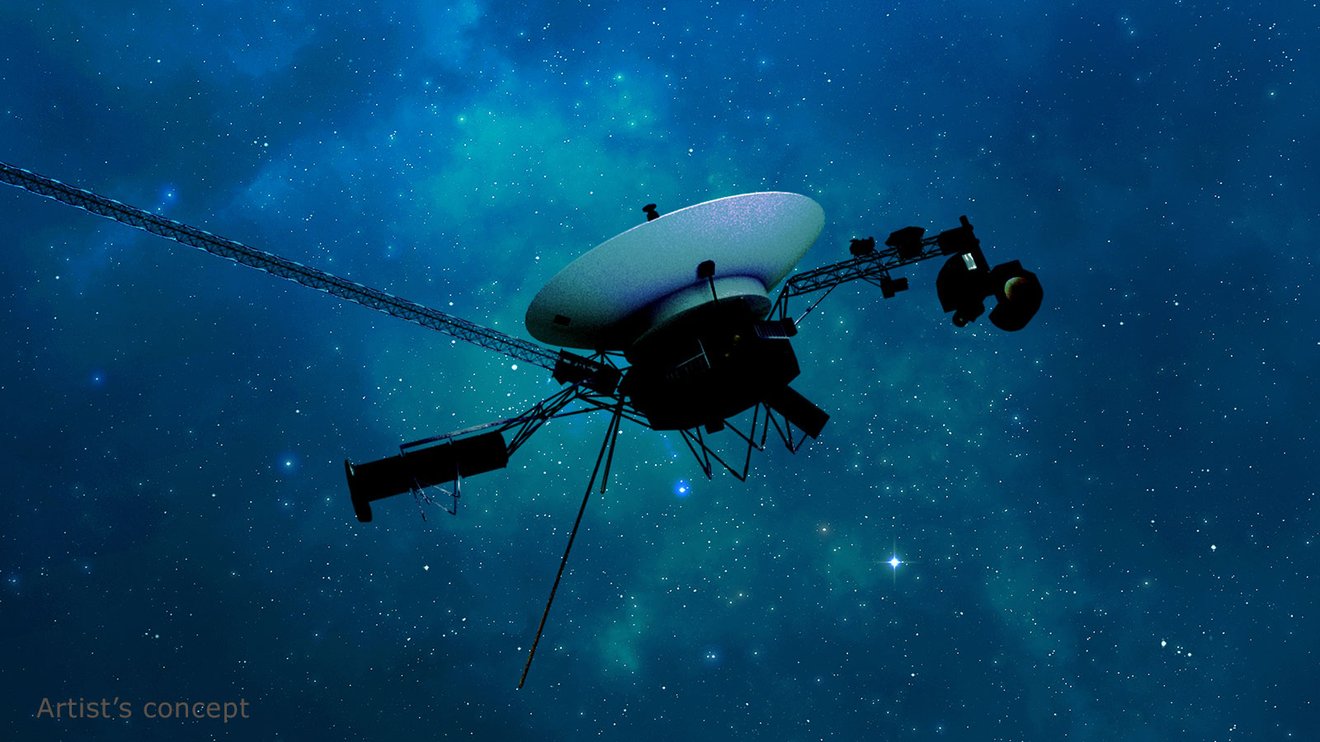
Voyager 1 and its twin Voyager 2 are the only spacecraft ever to operate outside the heliosphere, the protective bubble of particles and magnetic fields generated by the Sun. Voyager 1 reached the interstellar boundary in 2012, while Voyager 2 (traveling slower and in a different direction than its twin) reached it in 2018.
Mission Type
Science Targets
Voyager 1 & 2
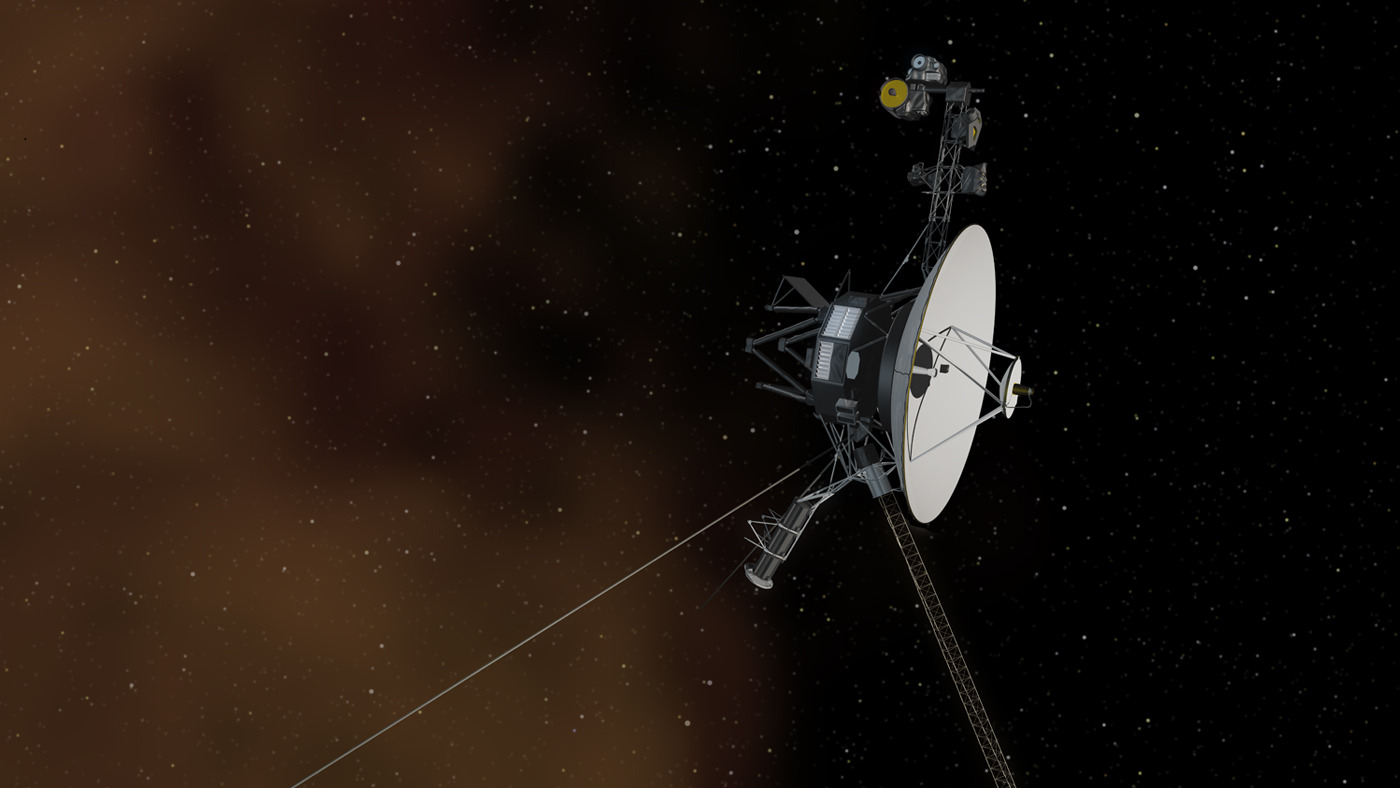
Mission Updates
Voyager 1 resumes sending engineering updates to Earth.
Latest News
NASA’s Voyager Team Focuses on Software Patch, Thrusters
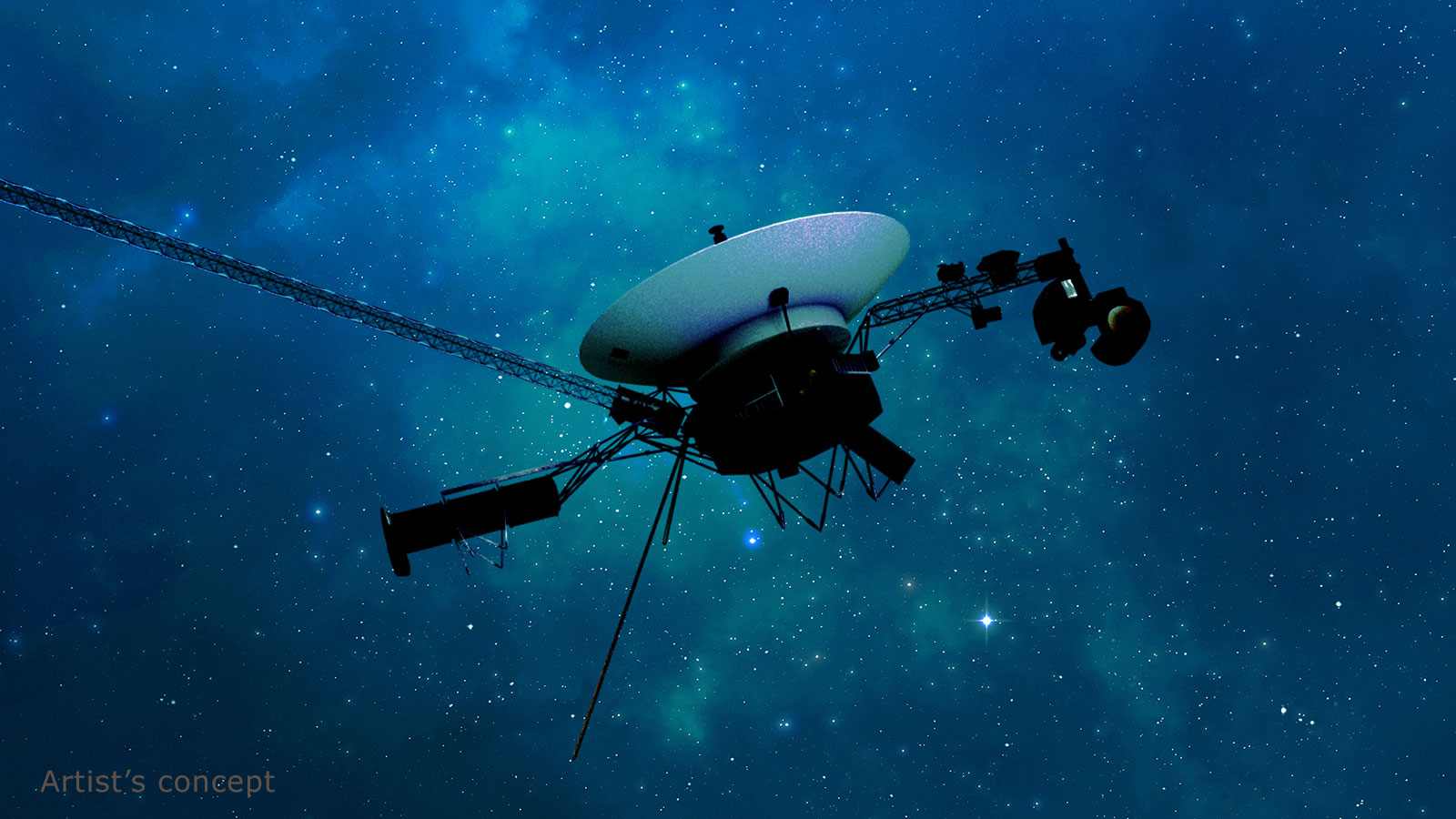
NASA’s Voyager Will Do More Science With New Power Strategy
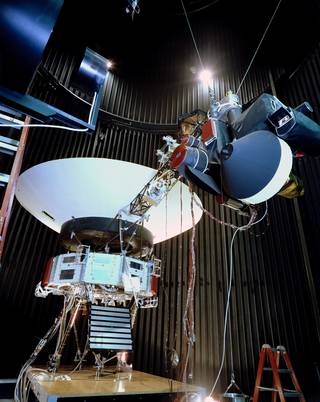
Edward Stone Retires After 50 Years as NASA Voyager’s Project Scientist
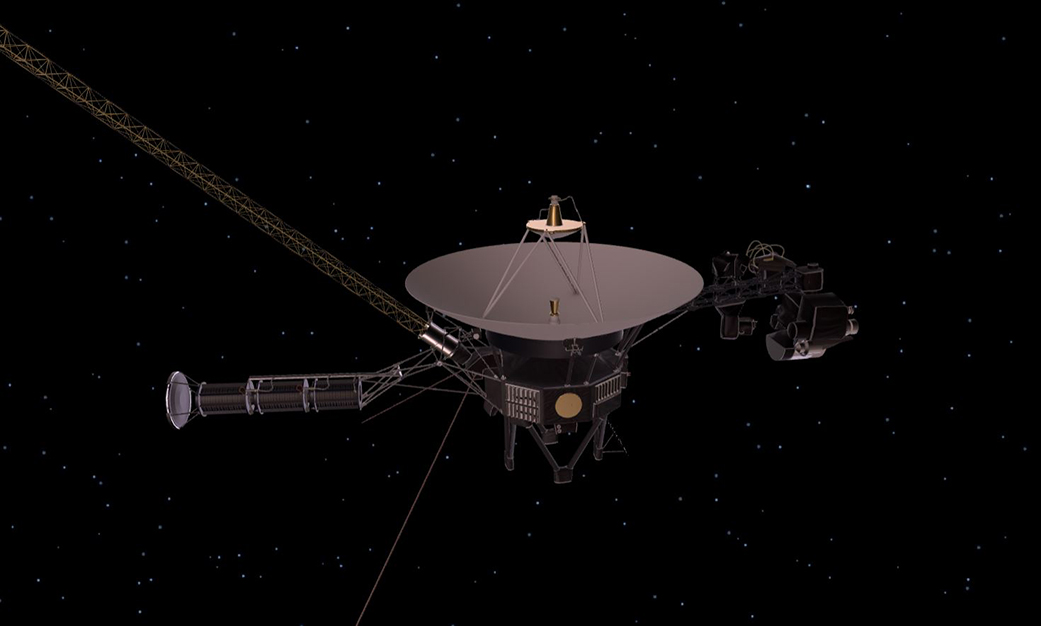
Engineers Solve Data Glitch on NASA’s Voyager 1
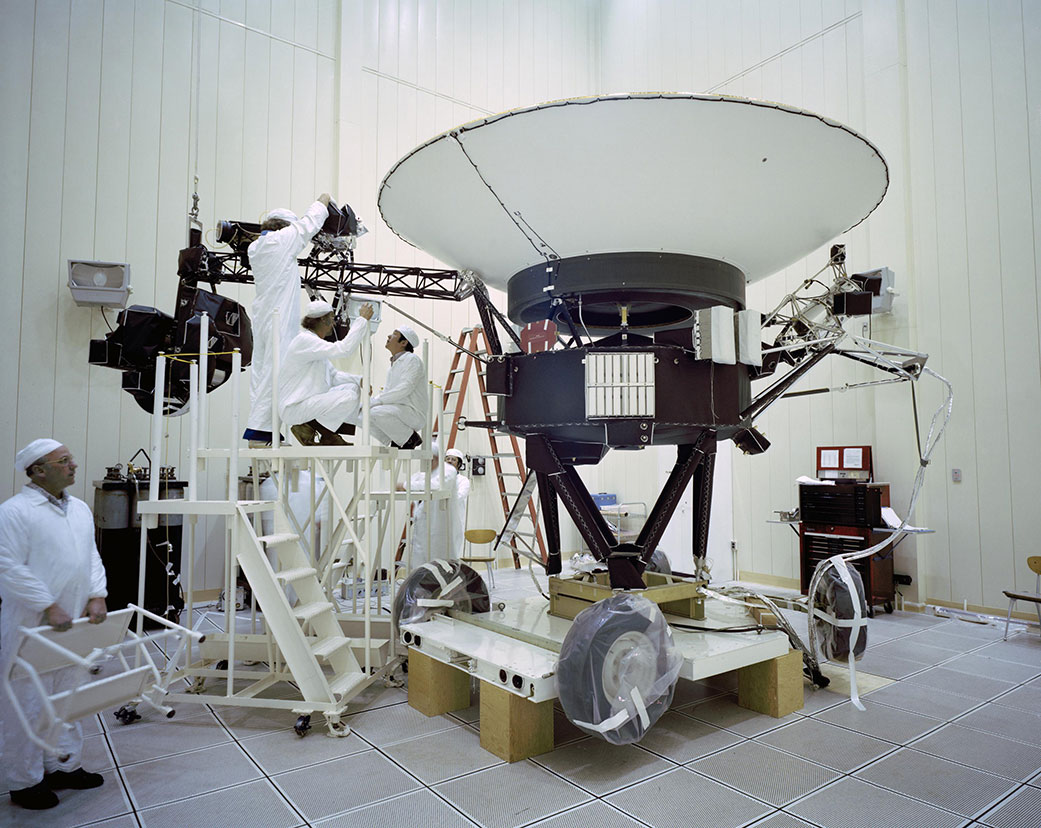
Voyager, NASA’s Longest-Lived Mission, Logs 45 Years in Space
The Interstellar Mission
After completing the first in-depth reconnaissance of the outer planets, the twin Voyagers are on a new mission to chart the edge of interstellar space.
The Golden Record
The contents of the golden record were selected for NASA by a committee led by Carl Sagan of Cornell University.
The Spacecraft
The twin Voyagers are escaping our solar system in different directions at more than 3 astronomical units (AU) a year.
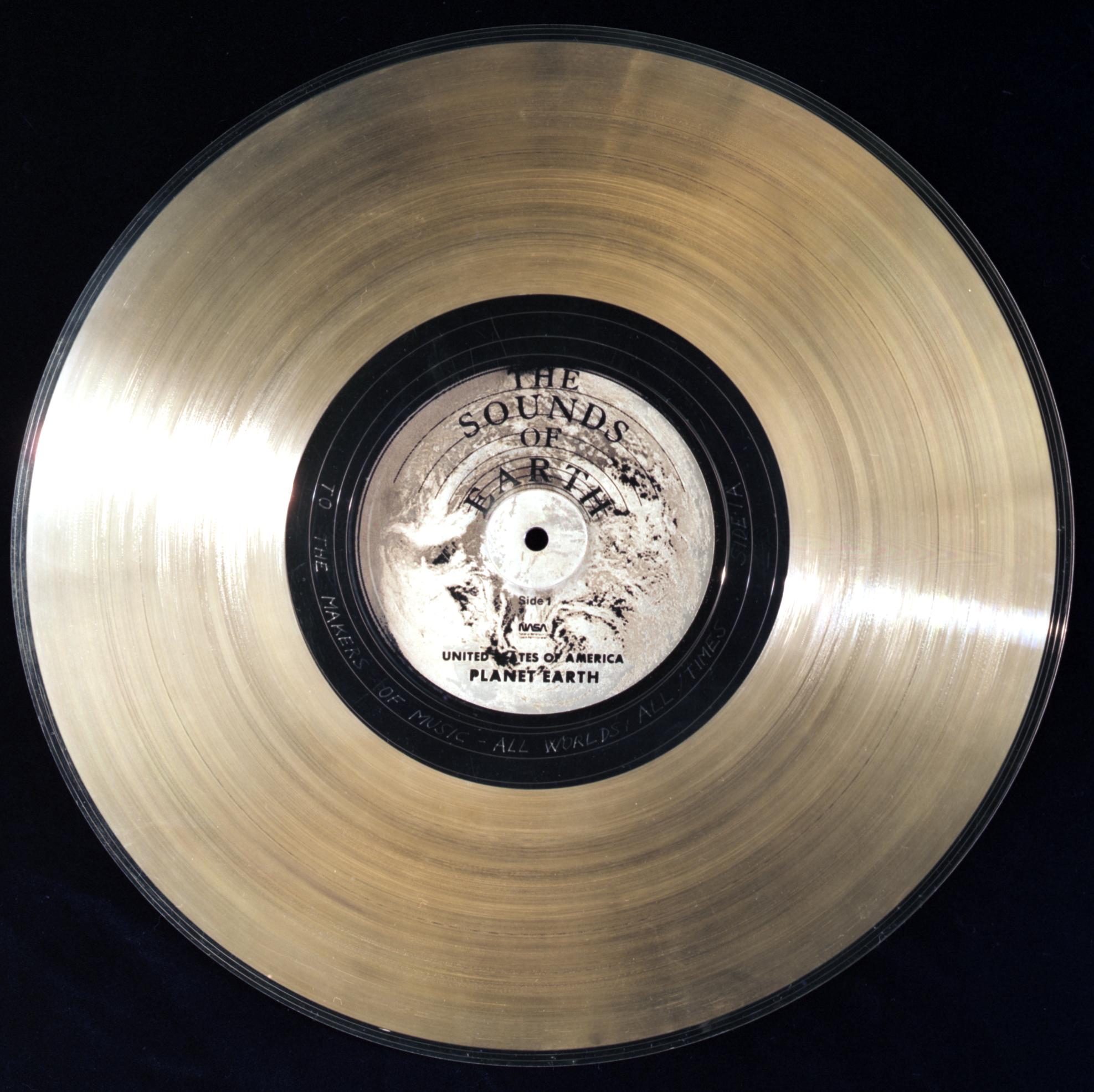
The Pale Blue Dot
The behind-the-scenes story of the making of Voyager 1's iconic image of Earth as "a mote of dust suspended in a sunbeam."
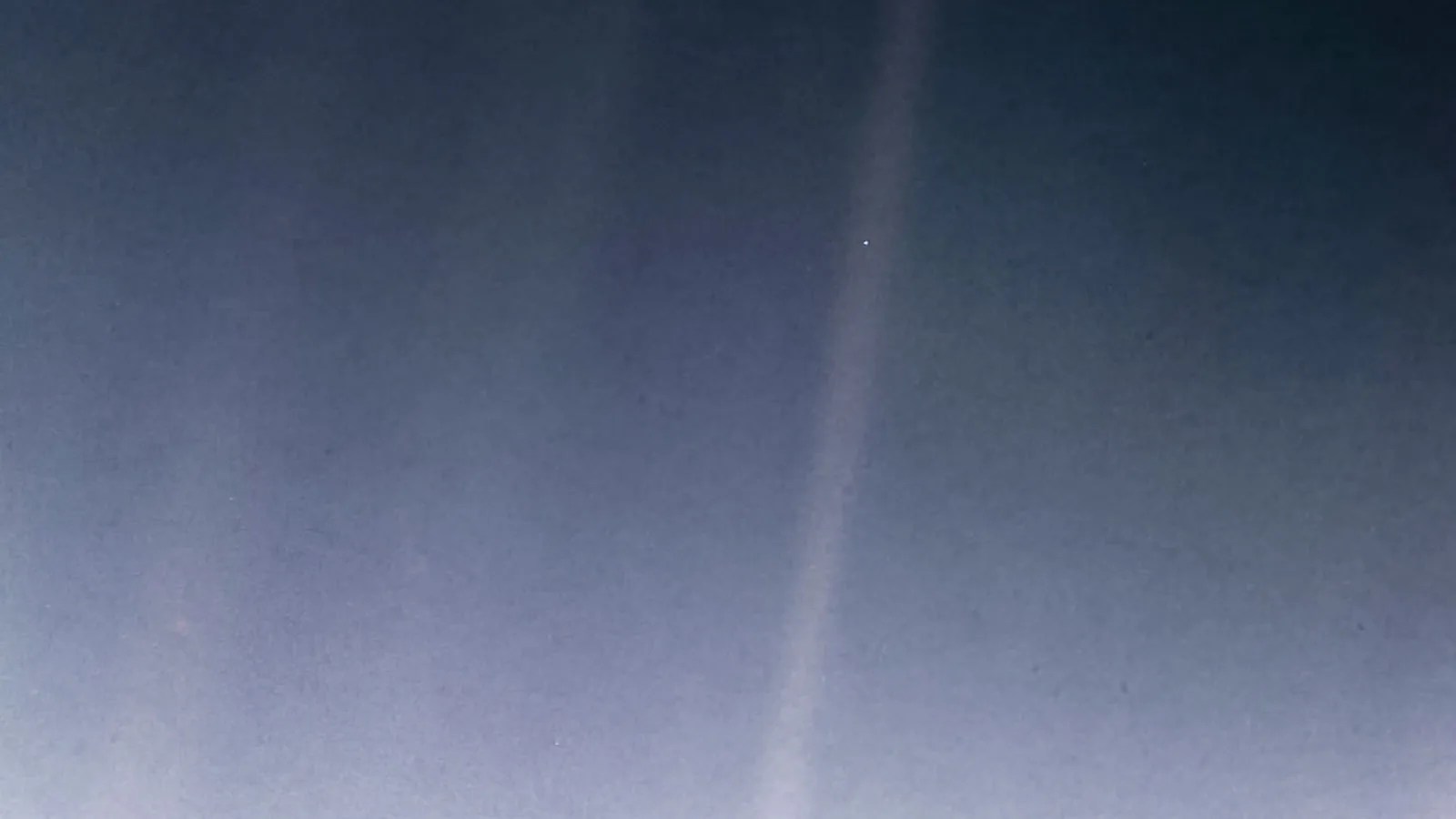
Discover More Topics From NASA

Our Solar System

Heliosphere
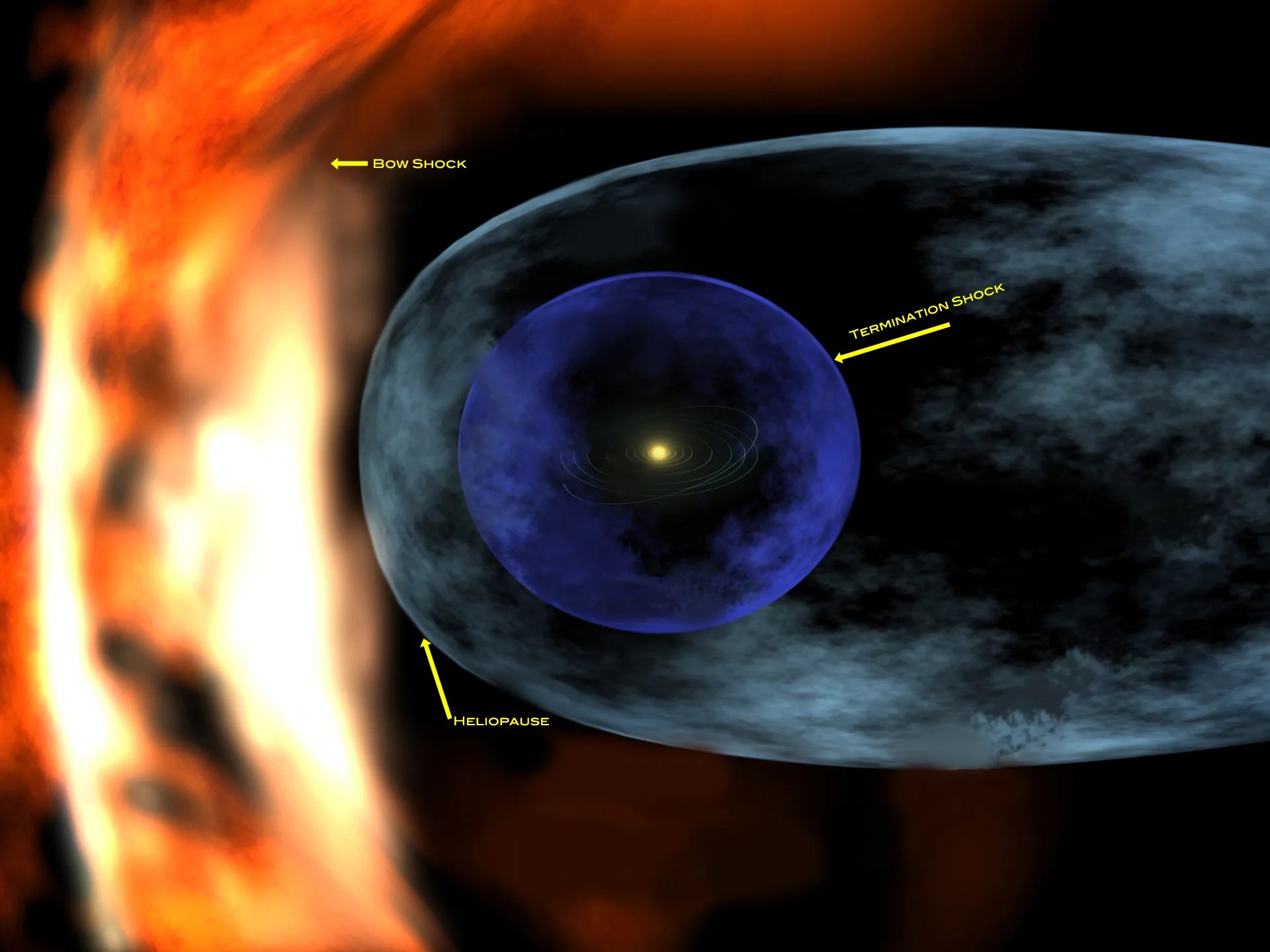
- Bishop Airlock
- Satellite Launch Services
- Astronaut Health & Medicine
- Mission Management, Ops, & Integration
- Advanced Systems
- Research & Tech Payloads
- Technical Resources
- In Space Servicing & Assembly
- Satellite and Spacecraft Subsystems
- Electro-Optics, Guidance & Navigation
- Digital Systems
- Signals Intelligence
- TALIX: Tactical Precision
- Ground Launch Support
© Copyright. All rights reserved.
Legal & Privacy Notices
Explore Space
Enabling your mission, from microgravity research to satellite deployment and commercial activities.
Innovate Forward
Pioneering space technology solutions for a sustainable future.
Protect from Ground to Space
Leading-edge defense solutions for ground, air, and space.
Expanding Frontiers
Starlab is unleashing the next generation of commercial space destinations.

Unleashing the next generation of space destinations.
Starlab, a US-led joint venture between Voyager Space and Airbus, will serve global space agencies and companies while ensuring continued human presence in low-Earth orbit and the transition of microgravity research into the new commercial era.

Airlocks, critical infrastructure for all space stations, facilitate movement between the internal station environment and the vacuum of space. From hosted payloads to robotics research and satellite deployment, learn how Bishop can advance your mission.

Our spacecraft technologies have long-standing heritage, enabling LEO, GEO and Cislunar missions since 2006 with a failure-free cumulative track record. Our solutions include rad-hardened laser and RF communications systems, electro-optical and digital systems, star trackers, space situational awareness-capable space cameras, image processors, command and data handling systems, and solutions for in-space servicing and assembly.

Our controllable solid propulsion technologies make solids perform like liquids. This technology allows for the in-flight modulation of thrust for solid fuel boosters, enabling a dramatic improvement in accuracy for both subsonic and hypersonic systems.

We are the leading provider of commercial research opportunities in low-Earth orbit. Whether you are designing your own plug-and-play payload leveraging our standardized hardware, or want our team to build a custom research platform for you – we are here to help.

We offer software and technologies that provide space-to-Earth and space-to-space visualization in support of Intelligence, Surveillance, and Reconnaissance (ISR) applications.

Our technologies help solve the medical and physiological problems of spaceflight and off-world surface exploration. We deliver a broad range of novel, non-invasive, and versatile instrumentation and hardware tailored for space mission-unique requirements.

Forging the Future.
We are Voyager Space, a leading space company dedicated to bettering humanity’s future through bold exploration, cutting-edge technologies, and an unwavering drive to protect our planet and our people.
It Takes a Planet to Explore the Universe
We’re committed to advancing humanity by driving space norms, empowering youth, and valuing sustainability from Earth to orbit, aiming for a prosperous future with a lasting, positive impact.

Russia's Nuclear Deterrent Command Center Imperiled by Winter Freeze—Report
A Russian nuclear deterrent command center in Moscow has been imperiled by power outages that have impacted more than one-quarter of the region's cities amid freezing temperatures, a Russian Telegram channel has reported.
The VChK-OGPU outlet, which purports to have inside information from Russian security forces, reported that the 820th Main Center for Missile Attack Warnings—part of the Russian Space Forces, a branch of the country's Aerospace Forces—near Solnechnogorsk in Moscow is without power.
It serves as the space forces early warning network against potential ballistic missile attacks.
The development comes as Russians are reported to be suffering from power outages in their homes in the Moscow region caused by technical issues at plants amid subzero temperatures.
On January 4, a heating main burst at the Klimovsk Specialized Ammunition Plant in the town of Podolsk, which is about 30 miles south of central Moscow. Since then, tens of thousands of Russians are reported to have no heating in their homes.
Affected areas include the cities of Khimki, Balashikha, Lobnya, Lyubertsy, Podolsk, Chekhov and Naro-Fominsk, a map published by a Russian Telegram channel and shared on other social media sites shows.
Other Russian media outlets reported that in Moscow, residents of Balashikha, Elektrostal, Solnechnogorsk, Dmitrov, Domodedovo, Troitsk, Taldom, Orekhovo-Zuyevo, Krasnogorsk, Pushkino, Ramenskoye, Voskresensk, Losino-Petrovsky and Selyatino are also without power.
The Telegram channel said that at the 820th Main Center for Missile Attack Warnings, "the crew...is on duty around the clock."
"It is here that the decision on a retaliatory nuclear strike is executed," the channel said.
Newsweek could not independently verify the report and has reached out to the Russian Defense Ministry by email for comment.
Power outages have also been reported in Russia's second-largest city, St. Petersburg, in the country's western Voronezh region, in the southwest city of Volgograd, and in Rostov, which borders Ukraine, a country that Russia has been at war with since February 24, 2022.
On Sunday, two shopping malls in St. Petersburg were forced to close because of problems with light and heating, reported local news outlet 78.ru. Hundreds of other homes in the city have had no electricity, water or heating for days amid temperatures of -25 C (-13 F).
Russian authorities have also been forced to compensate passengers of a train that ran from Samara to St. Petersburg (a 20-hour journey) without heating during -30 C (-22 F) temperatures. Videos circulating on social media showed carriage windows frozen over. A passenger also said the toilet didn't work during the trip because of frozen pipes.
Do you have a tip on a world news story that Newsweek should be covering? Do you have a question about the Russia-Ukraine war? Let us know via [email protected].
Related Articles
- Russia Maps Show 25% of Moscow Without Power Amid Winter Freeze 'Emergency'
- Serbian Mercenary Turns on Russian Leaders: 'They Treat Us Like Cattle'
- Winter Freeze Threats Come Back To Bite Russia As Power Outages Spread
Start your unlimited Newsweek trial
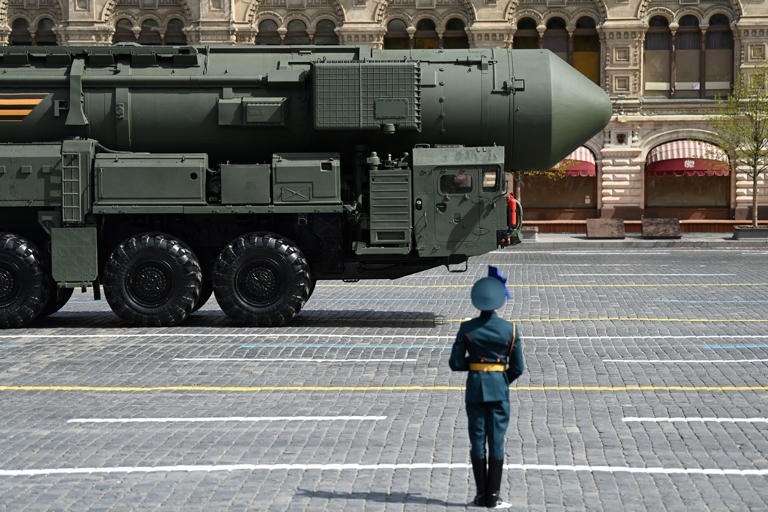

Shelling kills 14 in Russia's city of Belgorod following Moscow's aerial attacks across Ukraine
Shelling in the centre of the Russian border city of Belgorod Saturday killed 21 people, including three children, local officials reported.
A further 110 people were wounded in the strike, said regional governor Vyacheslav Gladkov, making it one of the deadliest attacks on Russian soil since the start of Moscow's invasion of Ukraine 22 months ago.
Russian authorities accused Kyiv of carrying out the attack, which took place the day after an 18-hour aerial bombardment across Ukraine killed at least 41 civilians.
- Complete coverage of the war in Ukraine
Images of Belgorod on social media showed burning cars and plumes of black smoke rising among damaged buildings as air raid sirens sounded. One strike hit close to a public ice rink in the very heart of the city, which lies 25 miles (40 kilometres) north of the Ukrainian border and 415 miles (670 kilometres) south of Moscow. While previous attacks have hit the city, they have rarely taken place in daylight and have claimed fewer lives.
Russia's Defence Ministry said it identified the ammunition used in the strike as Czech-made Vampire rockets and Olkha missiles fitted with cluster-munition warheads. It provided no additional information, and The Associated Press was unable to verify its claims.
"This crime will not go unpunished," the ministry said in a statement on social media.
The Kremlin said Russian President Vladimir Putin had been briefed on the situation, and that the country's health minister, Mikhail Murashko, was ordered to join a delegation of medical personnel and rescue workers travelling to Belgorod from Moscow.
Russian diplomats also called for a meeting of the UN. Security Council in connection with the strike. Speaking to Russia's state news agency, Foreign Ministry spokeswoman Maria Zakharova said that Britain and the United States were guilty of encouraging Kyiv to carry out what she described as a "terrorist attack." She also placed blame on EU countries who had supplied Ukraine with weapons.
"Silence in response to the unbridled barbarity of Ukraine's Nazis and their puppeteers and accomplices from ‘civilized democracies' will be akin to complicity in their bloody deeds," the ministry said in a statement.
Earlier Saturday, Moscow officials reported shooting down 32 Ukrainian drones over the country's Moscow, Bryansk, Oryol, and Kursk regions.
They also reported that cross-border shelling had killed two other people in Russia. A man died and four other people were wounded when a missile struck a private home in the Belgorod region late Friday evening and a 9-year-old was killed in a separate incident in the Bryansk region.
Cities across western Russia have come under regular attack from drones since May, with Russian officials blaming Kyiv. Ukrainian officials never acknowledge responsibility for attacks on Russian territory or the Crimean Peninsula. However, larger aerial strikes against Russia have previously followed heavy assaults on Ukrainian cities.
Russian drone strikes against Ukraine continued Saturday, with the General Staff of the Ukrainian Armed Forces reporting that 10 Iranian-made Shahed drones had been shot down across the Kherson, Khmelnytskyi, and Mykolaiv regions.
Local officials reported that three people had been killed by Russian missiles: a 55-year-old man in the Kherson region, a 43-year-old man in Stepnohirsk, a town in Ukraine's Zaporizhzhia region, and a 32-year-old in the Chernihiv region.
On Friday, Moscow's forces launched 122 missiles and dozens of drones across Ukraine, an onslaught described by one air force official as the biggest aerial barrage of the war.
As well as the 39 deaths, at least 160 people were wounded and an unknown number were buried under rubble in the assault, which damaged a maternity hospital, apartment blocks, and schools.
Western officials and analysts recently warned that Russia limited its cruise missile strikes for months in an apparent effort to build up stockpiles for massive strikes during the winter, hoping to break the Ukrainians' spirit.
Fighting along the front line is largely bogged down by winter weather after Ukraine's summer counteroffensive failed to make a significant breakthrough along the roughly 1,000-kilometre (620-mile) line of contact.
Russia's ongoing aerial attacks have also sparked concern for Ukraine's neighbours.
Poland's defence forces said Friday that an unknown object had entered the country's airspace before vanishing off radars, and that all indications pointed to it being a Russian missile.
Speaking to Russian state news agency RIA Novosti, Russia's charge d'affaires in Poland, Andrei Ordash, said Saturday that Moscow would not comment on the event until Warsaw had given the Kremlin evidence of an airspace violation.
"We will not give any explanations until we are presented with concrete evidence because these accusations are unsubstantiated," he said.
CTVNews.ca Top Stories

'Cybersecurity incident' shuts down London Drugs stores across Western Canada
All 79 locations of pharmacy and retail chain London Drugs were shut down Sunday after it was the victim of a “cybersecurity incident.”
CDC says it's identified 1st documented cases of HIV transmitted through cosmetic needles
Three women diagnosed with HIV after getting 'vampire facial' procedures at an unlicensed medical spa are believed to be the first documented cases of people contracting the virus through a cosmetic procedure using needles.
Canucks pull off comeback, top Predators 4-3 in OT
Elias Lindholm scored 1:02 into overtime and the Vancouver Canucks came all the way back to beat the Nashville Predators 4-3 in Game 4 of their first-round playoff series on Sunday.
Deadly six-vehicle crash on Highway 400 sparked by road rage incident
One person was killed in a six-vehicle crash on Highway 400 in Innisfil Friday evening.
Aerial photos show wide devastation left by a deadly tornado in China's Guangzhou
Aerial photos posted by Chinese state media on Sunday showed wide devastation in part of the southern city of Guangzhou after a tornado swept through the day before, killing five people, injuring dozens others and damaging more than 140 buildings.
Ontario to ban use of cellphones in school classrooms starting in September
Ontario is introducing a suite of measures that will crack down on cellphone use and vaping in schools.

Australian prime minister describes domestic violence as a 'national crisis' after protests
Australia's Prime Minister Anthony Albanese on Monday described domestic violence as a 'national crisis' after thousands rallied around the country against violence toward women.
Casey DeSmith won’t start Game 4 for the Canucks
Rookie goalie Arturs Silovs will start in net for the Vancouver Canucks when they face the Nashville Predators in Game 4 of their first-round playoff series Sunday.
Putin likely didn't order death of Russian opposition leader Navalny, U.S. official says
U.S. intelligence officials have determined that Russian President Vladimir Putin likely didn't order the death of imprisoned opposition leader Alexei Navalny in February, according to an official familiar with the determination.

Road closed in Oak Bay, B.C., so elephant seal can cross
Police in Oak Bay, B.C., had to close a stretch of road Sunday to help an elephant seal named Emerson get safely back into the water.

Canadian women defeat U.S. handily in Pacific Four Series rugby tournament opener
Captain Sophie de Goede scored 18 points, including two tries, as Canada thumped the U.S. 50-7 Sunday in the opening match of Pacific Four Series rugby tournament.
Elliot Page criticizes Alberta government for trans policies at Calgary Comic Expo event
Actor and activist Elliot Page offered a parent some guidance and blasted the Alberta government Sunday at the Calgary Comic and Entertainment Expo.
Kitchener family says their 10-year-old needs life-saving drug that cost $600,000
Raneem, 10, lives with a neurological condition and liver disease and needs Cholbam, a medication, for a longer and healthier life.

Prince Harry and Meghan to visit Nigeria in May for Invictus Games talks
Prince Harry and his wife Meghan will visit Nigeria in May for talks on the Invictus Games, which he founded to aid the rehabilitation of wounded and sick servicemembers and veterans, a Nigerian official said Sunday.
A Florida sheriff says 10 people were wounded by gunfire after a fight broke out at a party venue
A teenage gunman wounded 10 people when he opened fire early Sunday after fighting broke out during a private event at a Florida party venue, authorities said.
Japan's ruling party loses all 3 seats in special vote, seen as punishment for corruption scandal
Japanese Prime Minister Fumio Kishida's governing party, stung by an extensive slush funds scandal, appeared to have lost all three seats in Sunday's parliamentary byelections, according to media exit polls and preliminary results.

What Trudeau's podcast appearances say about the Liberals' next ballot box question
Trudeau recently appeared on four podcasts as he travels the country talking up the Liberals' latest budget, which he's pitching as a plan to inject more economic fairness into society for those under 40 — a cohort that has kept Trudeau in power since 2015 but is increasingly turning to Conservative Leader Pierre Poilievre.
Quebec to invest $603 million to protect the French language
Quebec is investing $603 million over the next five years to counter what its French-language minister describes as the decline of the French language in the province.

'Do not consume': Gift Chocolate recalled due to undeclared milk, soy
The Canadian Food Inspection Agency has issued a recall for a specific chocolate brand sold in Ontario and Quebec.
Global measles cases nearly doubled in one year, researchers say
The number of measles cases around the world nearly doubled from 2022 to 2023, researchers say, presenting a challenge to efforts to achieve and maintain elimination status in many countries.

Cybersecurity expert weighs in on the possibility of a U.S. ban of TikTok
Anyone who has a Gen-Z person in their life is likely familiar with the popular social media app TikTok, but a new bill in the U.S. may soon take it off of the American market.
Cisco reveals security breach, warns of state-sponsored spy campaign
State-sponsored actors targeted security devices used by governments around the world, according to technology firm Cisco Systems, which said the network devices are coveted intrusion points by spies.
These are the countries where TikTok is already banned
TikTok is in the crosshairs of authorities in the U.S., where a new law threatens a nationwide ban unless its China-based parent ByteDance divests. Here are the places that have partial or total bans on TikTok.
Entertainment

Quebec singing star and cultural icon Jean-Pierre Ferland dies at 89
Quebec singing star and cultural icon Jean-Pierre Ferland died on Saturday at the age of 89.
Nicole Kidman, who 'makes movies better,' gets AFI Life Achievement Award
Morgan Freeman spoke the words, but pretty much everyone who took the stage at the presentation of the AFI Life Achievement Award agreed: "Nicole Kidman. She makes movies better."
Fair share: the right office solution can take finding the right partner
The rise of remote and hybrid work has made it harder to justify a full office, so more are leaning on co-working spaces that they share with many others for convenience and cost savings. The choice, however, comes at the expense of privacy and control.
What is a 'halal mortgage'? Does it make housing more accessible?
The 2024 federal budget announced on April 16 included plans to introduce 'halal mortgages' as a way to increase access to home ownership.

Seeking engagement and purpose, corporate employees turn to workplace volunteering
Employees increasingly find that robust workplace volunteer programs meet their desires for in-person connections, professional growth and altruistically inclined employers — career objectives that might be missing in conventional corporate atmospheres.
Dishing out history: A look back at defunct restaurants in Winnipeg
Take an illustrated look back at the culinary history of Winnipeg.
Island near Mull of Kintyre for sale for US$3.1 million
An idyllic 453-acre private island is up for sale off the west coast of Scotland and it comes with sandy beaches, puffins galore, seven houses, a pub, a helipad and a flock of black-faced sheep.

Candace Parker, a 3-time WNBA champion and 2-time Olympic gold medalist, announces retirement
Three-time WNBA champion and two-time Olympic gold medalist Candace Parker announced on social media that her career was over on Sunday after 16 seasons.

'I was scared': Ontario man's car repossessed after missing two repair loan payments
An Ontario man who took out a loan to pay for auto repairs said his car was repossessed after he missed two payments.
Ford just reported a massive loss on every electric vehicle it sold
Ford’s electric vehicle unit reported that losses soared in the first quarter to US $1.3 billion, or US$132,000 for each of the 10,000 vehicles it sold in the first three months of the year.
Honda to get up to $5B in govt help for EV battery, assembly plants
Honda is set to build an electric vehicle battery plant next to its Alliston, Ont., assembly plant, which it is retooling to produce fully electric vehicles, all part of a $15-billion project that is expected to include up to $5 billion in public money.
Local Spotlight

Haida Elder suing Catholic Church and priest, hopes for 'healing and reconciliation'
The lawyer for a residential school survivor leading a proposed class-action defamation lawsuit against the Catholic Church over residential schools says the court action is a last resort.
DonAir force takes over at Oilers playoff games
As if a 4-0 Edmonton Oilers lead in Game 1 of their playoff series with the Los Angeles Kings wasn't good enough, what was announced at Rogers Place during the next TV timeout nearly blew the roof off the downtown arena.
'It was instant karma': Viral video captures failed theft attempt in Nanaimo, B.C.
Mounties in Nanaimo, B.C., say two late-night revellers are lucky their allegedly drunken antics weren't reported to police after security cameras captured the men trying to steal a heavy sign from a downtown business.
Fergus, Ont. man feels nickel-and-dimed for $0.05 property tax bill
A property tax bill is perplexing a small townhouse community in Fergus, Ont.
Twins from Toronto were Canada's top two female finishers at this year's Boston Marathon
When identical twin sisters Kim and Michelle Krezonoski were invited to compete against some of the world’s most elite female runners at last week’s Boston Marathon, they were in disbelief.
Mystery surrounds giant custom Canucks jerseys worn by Lions Gate Bridge statues
The giant stone statues guarding the Lions Gate Bridge have been dressed in custom Vancouver Canucks jerseys as the NHL playoffs get underway.
'I'm committed': Oilers fan skips haircuts for 10 years waiting for Stanley Cup win
A local Oilers fan is hoping to see his team cut through the postseason, so he can cut his hair.
'It's not my father's body!' Wrong man sent home after death on family vacation in Cuba
A family from Laval, Que. is looking for answers... and their father's body. He died on vacation in Cuba and authorities sent someone else's body back to Canada.

'It's a shame': Community holds vigil for White Rock stabbing victim
Dozens of people gathered to mourn at the waterfront promenade in White Rock Sunday, where 27-year-old Kulwinder Sohi was stabbed to death last week.

JUST IN | Motorcyclist critically injured in east Toronto collision
A motorcyclist has been rushed to the hospital with critical injuries following a collision with the driver of a car in Toronto’s east end on Sunday.
Suspect allegedly made anti-2SLGBTQI+ comments towards victim in downtown Toronto: police
Police are working to identify a man who allegedly followed a victim and made anti-2SLGBTQI+ comments while continuously harassing them in downtown Toronto last month.
Hundreds of Calgarians step up in Crescent Heights to help end homelessness
About 300 people laced up their runners and tackled the McHugh Bluff staircase to help bring an end to homelessness in Calgary.
Pedestrian suffers ‘life-altering’ injuries after getting run over twice in Bridgeland parking lot
Calgary police are investigating after a hit-and-run Saturday afternoon in Bridgeland that left a pedestrian hospitalized with serious, life-altering injuries.

Community group looks to help as Ottawa Food Bank sees a surge in demand
While food banks across Ontario continue to experience a surge in use, one Ottawa community group is working to fight food insecurity. The Food for All Ottawa Facebook page has been bringing in 150 to 200 new members a month, connecting food donors directly with people in need.
Police investigating fatal collision involving a pedestrian in Ottawa's south-end
Ottawa police say officers responded to a call for a collision involving a pedestrian and a vehicle on 8th Line Road, near Walker Road, just after 2:30 a.m.

Students vow to 'stand their ground,' show solidarity with Palestinians at McGill encampment
Hundreds of students are still camping out on McGill's University's campus this weekend in solidarity with Palestinians in Gaza.
Quebec eyes new bill to force online streaming giants to show more francophone content
Quebecers could soon see more homegrown content on streaming services like Netflix and Disney+. The provincial government announced that it plans to introduce a new bill within the next year to force online streaming giants to add more made-in-Quebec media on their platforms.

Man dead after motorcycle crash on Highway 16 Saturday
A man is dead after he reportedly lost control of his motorcycle in Strathcona County Saturday night.
Woman killed in crash near Fort McMurray International Airport Saturday morning
A woman was killed after crashing into a water truck near the Fort McMurray International Airport Saturday morning.
Oilers add depth with recall of Jack Campbell, Philip Broberg from AHL
The Edmonton Oilers are adding depth for the playoffs by recalling goaltender Jack Campbell and defenceman Philip Broberg from the American Hockey League's Bakersfield Condors.
Nova Scotians remember those lost in workplace accidents on National Day of Mourning
Dozens of people across Nova Scotia came together at Province House on Sunday for National Day of Mourning, an annual day that remembers those who have died of or were injured because of a workplace accident.
Saint John honours National Day of Mourning with ceremony at Rockwood Park
Over 150 residents flocked to Rockwood Park in Saint John on Sunday to pay their respects on the National Day of Mourning, which honours workers who have been killed or have suffered a workplace related injury while on the job.

A timeline of the Jeremy Skibicki case
The trial for the man accused of killing four Indigenous women in Winnipeg is set to get underway on April 29.
Nichushkin scores hat trick to lead Avalanche to 5-1 win, leaving Jets on the brink
The Jets will look to avoid elimination in Game 5 on Tuesday night at Canada Life Centre.
Siloam Mission launches housing strategy, aims to solve chronic homelessness in Winnipeg
A Winnipeg-based non-profit organization is hoping to tackle chronic homelessness in the city with a newly launched housing strategy.

Day of mourning for workplace tragedy attracts large crowds in Regina
Canada's National Day of Mourning on April 28 is dedicated to those who have been injured or lost their lives due to workplace tragedy.
Regina Rebels seize gold at U-18 National Women's Hockey Championship
The Regina Rebels made history over the weekend — taking home gold for the first time ever at the U-18 women's hockey national championships.
London Drugs shuts down all western Canadian stores 'until further notice' following cyber incident
London Drugs has announced all of its locations in western Canada will be closed until further notice following a cybersecurity incident.

'We have an ability to create change': Waterloo Region residents mourn those who never returned from work
Waterloo Region residents, workplace safety advocates, and politicians all gathered at the Worker’s Monument in Cambridge’s Riverside Park for the National Day of Mourning.
Most-read stories of the week: Stolen laptop, parking dispute, $0.05 property tax bill
A ransom for a stolen laptop, a parking dispute at a Kitchener apartment building, and a five-cent property tax bill round out the most-read stories of the week.
Police charge two teens following Kitchener convenience store robbery
Waterloo Regional Police have charged two teens in connection to a Kitchener robbery.

Saskatoon Public Schools says budget increase won't cover growing enrollment or class complexity
Saskatoon’s public school board says that despite “record” funding from the province this year, the ministry’s allocation to the division doesn’t make the grade.
Saskatoon care home workers escalating strike action
Workers at group homes run by LutherCare Communities in Saskatoon are escalating their strike action.
Northern Ontario

Special weather statements issued in northern Ont. for freezing or heavy rain
Environment Canada has issued special weather statements warning of freezing or heavy rain from Chapleau, Ont. to Sturgeon Lake, Ont.
Northern OPP detachment lays 3 impaired driving charges in 13 hours
Impaired drivers recently kept a northern Ontario Provincial Police detachment busy this weekend. The Temiskaming detachment charged three people with impaired driving in only 13 hours.
PLAYOFF TRACKER | London remains undefeated as Knights crush Saginaw 3-1 on home ice
The London Knights have taken a 2-0 series lead on the Saginaw Spirit in the OHL Western Conference Final after a 3-1 win Sunday. The 10-0 start to the playoffs is the best in franchise history during the internet era.
Advocate for injured workers honoured with Lifetime Activism Award on National Day of Mourning
It’s been 25 years since Kevin Jones was injured while employed at a factory building transport trailers. 'There was repetitive strain, motion muscles, skeletal tearing, and nerve pain in my neck, shoulders and upper back,' explained Jones, 51, of London, Ont.

Police searching for man on Lake Muskoka after possible drowning call
Police and search and rescue crews in Gravenhurst are trying to locate a man after reports of a possible drowning.
'Kitten Shower' held ahead of anticipated influx of kittens this summer
The Barrie SPCA is taking inspiration from a traditional baby shower with its latest event this weekend to prepare for an influx of cats this summer.
PHOTOS | High tea and big hats galore as Rotary Club fundraiser hits 10-year milestone
Since 2014, the Rotary Club of LaSalle Centennial has been holding its annual Big Hats and High Tea Social. The fundraising event returned Sunday at the Essex Golf and Country Club.
More than 200 people run in the rain to support Ronald McDonald House
Rain couldn't stop an annual charity 5K run from taking place in Lakeshore this weekend. In fact, running in the rain has practically become a tradition at this point.
Vancouver Island

B.C. breweries take home awards at World Beer Cup
Out of more than 9,000 entries from over 2,000 breweries in 50 countries, a handful of B.C. brews landed on the podium at the World Beer Cup this week.
B.C. man rescues starving dachshund trapped in carrier: BC SPCA
An emaciated dachshund is now recovering thanks to a Good Samaritan who found the pup near a biking trail in Kelowna, according to the BC SPCA.
Search crews called in after missing Kelowna senior's truck found
Search and rescue crews have been called in after a vehicle belonging to a missing senior was located near a rural intersection outside of Kelowna Tuesday.

Bandits get hat trick from Logan Sawyer en route to 8-2 win over Okotoks
The Brooks Bandits got down to business Friday, defeating the Okotoks Oilers 8-2.
'No real winner' following first Alberta NDP leadership debate: political scientist
An Alberta political scientist said the NDP leadership hopefuls remained fairly even following the first of the party’s debates.
Multiple grass fires sparked near Kipp rail yard
It was a busy Wednesday evening for fire crews in Lethbridge County after multiple grass fires were sparked near the Kipp rail yard.
Sault Ste. Marie

Sudbury renews commitment to workplace health and safety on 40th anniversary of National Day of Mourning
Greater Sudbury marked the Day of Mourning with ceremony at Laurentian University on Sunday to honour lives lost in workplace accidents and occupational illnesses. The event included guest speakers like Celine Quenneville, whose husband died last year from cancer the family said they believe was caused from diesel exposure on the job.
Elliot Lake hospital moving towards ‘normalcy’ with mask-friendly policy
St. Joseph’s General Hospital Elliot Lake says it is moving towards “normalcy” by transitioning to a mask-friendly policy.

Voice of 'Hockey Night in Canada' Bob Cole never considered moving out of St. John's
Legendary sportscaster Bob Cole was a Newfoundlander through and through, and his daughter says his connection to the province was 'everything' to him.
Cenovus fined $2.5 million for biggest oil spill in Newfoundland and Labrador history
Cenovus Energy has been ordered to pay a $2.5-million fine for its role in the largest offshore oil spill ever recorded in Newfoundland and Labrador.
Canada recognizes housing as a human right. Few provinces have followed suit
As more Canadians find themselves struggling to afford or find housing, the country's smallest province is the only one that can point to legislation recognizing housing as a human right.
Shopping Trends
The Shopping Trends team is independent of the journalists at CTV News. We may earn a commission when you use our links to shop. Read about us.
Editor's Picks
16 night creams that'll work magic on your skin while you sleep, 17 practical things for your backyard that you'll want to order immediately, 19 of the best mother's day gifts under $50, 17 backyard decor and furniture pieces you need before summer arrives, 15 cleaning products that'll have you working smarter not harder, our guide to the best fans in canada in 2024 (and where to get them), 22 of the best mother's day gifts to give in 2024, 17 unique mother's day gifts your mom definitely wants, but probably won’t buy herself, if your mom needs a bit of rest and relaxation, here are 20 of the best self-care gifts for mother's day, 20 affordable amazon beauty and skincare products you'll probably repurchase over and over again, if you suffer from dry skin, you'll want to add at least one of these hydrating moisturizers to your cart, 14 of the best tinted lip balms you can get online right now, stay connected.


COMMENTS
Mission Overview. The twin Voyager 1 and 2 spacecraft are exploring where nothing from Earth has flown before. Continuing on their more-than-40-year journey since their 1977 launches, they each are much farther away from Earth and the sun than Pluto. In August 2012, Voyager 1 made the historic entry into interstellar space, the region between ...
Voyager 2 continues to operate normally. Launched over 46 years ago, the twin Voyager spacecraft are the longest-running and most distant spacecraft in history. Before the start of their interstellar exploration, both probes flew by Saturn and Jupiter, and Voyager 2 flew by Uranus and Neptune. Caltech in Pasadena, California, manages JPL for NASA.
A poster of the planets and moons visited during the Voyager program. The Voyager program is an American scientific program that employs two interstellar probes, Voyager 1 and Voyager 2.They were launched in 1977 to take advantage of a favorable alignment of the two gas giants Jupiter and Saturn and the ice giants, Uranus and Neptune, to fly near them while collecting data for transmission ...
The twin spacecraft Voyager 1 and Voyager 2 were launched by NASA in separate months in the summer of 1977 from Cape Canaveral, Florida. As originally designed, the Voyagers were to conduct closeup studies of Jupiter and Saturn, Saturn's rings, and the larger moons of the two planets.
Voyager 1 is the first human-made object to venture into interstellar space. Voyager 1 discovered a thin ring around Jupiter and two new Jovian moons: Thebe and Metis. ... Voyager 1 was launched after Voyager 2, but because of a faster route, it exited the asteroid belt earlier than its twin, having overtaken Voyager 2 on Dec. 15, 1977.
Launched in 1977, the twin Voyager probes are NASA's longest-operating mission and the only spacecraft ever to explore interstellar space. Read more This is a real-time indicator of Voyager 1's distance from Earth in astronomical units (AU) and either miles (mi) or kilometers (km).
Voyager 1 is a space probe launched by NASA on September 5, 1977, as part of the Voyager program to study the outer Solar System and the interstellar space beyond the Sun's heliosphere. It was launched 16 days after its twin Voyager 2.
Voyager 1 reached interstellar space in August 2012 and is the most distant human-made object in existence. Launched just shortly after its twin spacecraft, Voyager 2, in 1977, Voyager 1 explored the Jovian and Saturnian systems discovering new moons, active volcanoes and a wealth of data about the outer solar system. ...
Launched in 1977, NASA's twin Voyager spacecraft inspired the world with pioneering visits to Jupiter, Saturn, Uranus, and Neptune. Their journey continues 45 years later as both probes explore interstellar space, the region outside the protective heliosphere created by our Sun. Researchers - some younger than the spacecraft - are now ...
Voyager 1 Present Position. This simulated view of the solar system allows you to explore the planets, moons, asteroids, comets, and spacecraft exploring our solar system. You can also fast-forward and rewind in real-time. NASA/JPL-Caltech.
Voyager 1 is the first spacecraft to travel beyond the solar system and reach interstellar space . The probe launched on Sept. 5, 1977 — about two weeks after its twin Voyager 2 — and as of ...
NASA's Voyager 1 spacecraft, originally launched in 1977, is finally phoning home again. The space explorer contacted ground control for the first time in five months with status updates on its ...
A Titan/Centaur-6 launch vehicle carries NASA's Voyager 1 at the Kennedy Space Center on Sept. 5, 1977. ... the Voyager 2 probe, each launched in 1977 on missions to study the outer solar system ...
Voyager 1, launched in September 1977, is currently exploring the farthest edges of the solar system. (Image credit: NASA) NASA's interstellar explorer Voyager 1 is finally communicating with ...
Forty-five years ago, on Aug. 20, 1977, NASA's Voyager 2 spacecraft launched from Cape Canaveral, Florida, on a Titan III-Centaur rocket, embarking on a "grand tour" of the solar system that would ...
The Voyager 1 and Voyager 2 probes launched in 1977 on a mission to study Jupiter and Saturn but continued onward through the outer reaches of the solar system. ... Voyager 1 became the first ...
The twin spacecraft Voyager 1 and Voyager 2 were launched by NASA in separate months in the summer of 1977 from Cape Canaveral, Florida. As originally designed, the Voyagers were to conduct closeup studies of Jupiter and Saturn, Saturn's rings, and the larger moons of the two planets. ... Voyager 2 was launched first, on August 20, 1977 ...
Launched in 1977, the twin Voyager probes are NASA's longest-operating mission and the only spacecraft ever to explore interstellar space. NASA's twin Voyager probes have become, in some ways, time capsules of their era: They each carry an eight-track tape player for recording data, they have about 3 million times less memory than modern cellphones, and they transmit data about 38,000 ...
The spacecraft launched in 1977 and is now 15 billion miles from Earth. It went silent in November. ... Voyager 1 is one of two identical space probes. Voyager 2, launched two weeks before Voyager ...
The craft embodies a golden age of space exploration. The writer is a science commentator. A ghost has come back to life. Voyager 1, a spacecraft dispatched in the 1970s that had been sending ...
The Deep Space Network is a system of radio antennae on Earth that help the agency communicate with the Voyager probes and other spacecraft exploring our solar system. ... the Voyager 1 and its ...
Voyager 1 and its twin Voyager 2 are the only spacecraft ever to operate outside the heliosphere, the protective bubble of particles and magnetic fields generated by the Sun. Voyager 1 reached the interstellar boundary in 2012, while Voyager 2 (traveling slower and in a different direction than its twin) reached it in 2018.
We deliver a broad range of novel, non-invasive, and versatile instrumentation and hardware tailored for space mission-unique requirements. the Future. We are Voyager Space, a leading space company dedicated to bettering humanity's future through bold exploration, cutting-edge technologies, and an unwavering drive to protect our planet and ...
The Don-2N radar (Russian: Дон-2Н, NATO: Pill Box) is a large missile defense and early warning active electronically scanned array radar outside Moscow, and a key part of the Russian A-135 anti-ballistic missile system designed for the defense of the capital against ballistic missiles. Located near Sofrino in Pushkinsky District of Moscow ...
The VChK-OGPU outlet, which purports to have inside information from Russian security forces, reported that the 820th Main Center for Missile Attack Warnings—part of the Russian Space Forces, a ...
Shelling in the centre of the Russian border city of Belgorod killed 14 people, including two children, and wounded 108 others Saturday, Russia's Emergency Situations Ministry said.
Find company research, competitor information, contact details & financial data for JUPITER LLC of Pushkino, Moscow region. Get the latest business insights from Dun & Bradstreet.